#George Westinghouse Contributions
Text
George Westinghouse - A Pittsburgh Icon
The Life and Accomplishments of George Westinghouse
An engineer and businessperson from America who lived between 1846 and 1912.
George Westinghouse Jr., born on October 6, 1846 and passed away on March 12, 1914, was an American entrepreneur and engineer from Pennsylvania. At the age of 19, he was granted his first patent for the development of the railway air brake. Seeing the potential of…

View On WordPress
#George Westinghouse#George Westinghouse Accomplishments#George Westinghouse Achievements#George Westinghouse Air Brake#George Westinghouse Air Brake System#George Westinghouse Career And Technical Education#George Westinghouse Company#George Westinghouse Contributions#George Westinghouse Date Of Birth#George Westinghouse Facts#George Westinghouse Industry#George Westinghouse Invention#George Westinghouse Inventions List#George Westinghouse Inventions Timeline#George Westinghouse Labor Relations#George Westinghouse Timeline#George Westinghouse Us History
2 notes
·
View notes
Text
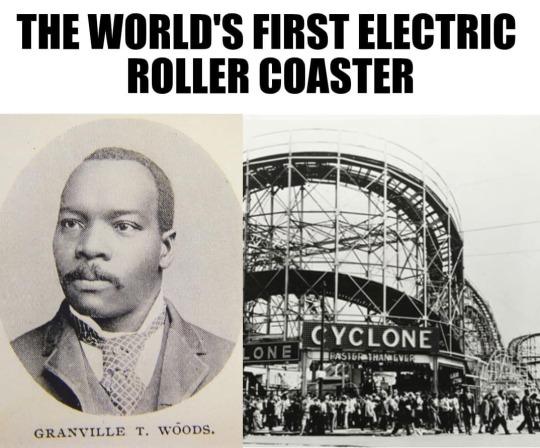
THE WORLD'S FIRST ELECTRIC ROLLER COASTER
Granville T. Woods (April 23, 1856 – January 30, 1910) introduced the “Figure Eight,” the world's first electric roller coaster, in 1892 at Coney Island Amusement Park in New York. Woods patented the invention in 1893, and in 1901, he sold it to General Electric.
Woods was an American inventor who held more than 50 patents in the United States. He was the first African American mechanical and electrical engineer after the Civil War. Self-taught, he concentrated most of his work on trains and streetcars.
In 1884, Woods received his first patent, for a steam boiler furnace, and in 1885, Woods patented an apparatus that was a combination of a telephone and a telegraph. The device, which he called "telegraphony", would allow a telegraph station to send voice and telegraph messages through Morse code over a single wire. He sold the rights to this device to the American Bell Telephone Company.
In 1887, he patented the Synchronous Multiplex Railway Telegraph, which allowed communications between train stations from moving trains by creating a magnetic field around a coiled wire under the train. Woods caught smallpox prior to patenting the technology, and Lucius Phelps patented it in 1884. In 1887, Woods used notes, sketches, and a working model of the invention to secure the patent. The invention was so successful that Woods began the Woods Electric Company in Cincinnati, Ohio, to market and sell his patents. However, the company quickly became devoted to invention creation until it was dissolved in 1893.
Woods often had difficulties in enjoying his success as other inventors made claims to his devices. Thomas Edison later filed a claim to the ownership of this patent, stating that he had first created a similar telegraph and that he was entitled to the patent for the device. Woods was twice successful in defending himself, proving that there were no other devices upon which he could have depended or relied upon to make his device. After Thomas Edison's second defeat, he decided to offer Granville Woods a position with the Edison Company, but Woods declined.
In 1888, Woods manufactured a system of overhead electric conducting lines for railroads modeled after the system pioneered by Charles van Depoele, a famed inventor who had by then installed his electric railway system in thirteen United States cities.
Following the Great Blizzard of 1888, New York City Mayor Hugh J. Grant declared that all wires, many of which powered the above-ground rail system, had to be removed and buried, emphasizing the need for an underground system. Woods's patent built upon previous third rail systems, which were used for light rails, and increased the power for use on underground trains. His system relied on wire brushes to make connections with metallic terminal heads without exposing wires by installing electrical contactor rails. Once the train car had passed over, the wires were no longer live, reducing the risk of injury. It was successfully tested in February 1892 in Coney Island on the Figure Eight Roller Coaster.
In 1896, Woods created a system for controlling electrical lights in theaters, known as the "safety dimmer", which was economical, safe, and efficient, saving 40% of electricity use.
Woods is also sometimes credited with the invention of the air brake for trains in 1904; however, George Westinghouse patented the air brake almost 40 years prior, making Woods's contribution an improvement to the invention.
Woods died of a cerebral hemorrhage at Harlem Hospital in New York City on January 30, 1910, having sold a number of his devices to such companies as Westinghouse, General Electric, and American Engineering. Until 1975, his resting place was an unmarked grave, but historian M.A. Harris helped raise funds, persuading several of the corporations that used Woods's inventions to donate money to purchase a headstone. It was erected at St. Michael's Cemetery in Elmhurst, Queens.
LEGACY
▪Baltimore City Community College established the Granville T. Woods scholarship in memory of the inventor.
▪In 2004, the New York City Transit Authority organized an exhibition on Woods that utilized bus and train depots and an issue of four million MetroCards commemorating the inventor's achievements in pioneering the third rail.
▪In 2006, Woods was inducted into the National Inventors Hall of Fame.
▪In April 2008, the corner of Stillwell and Mermaid Avenues in Coney Island was named Granville T. Woods Way.
483 notes
·
View notes
Text

THE WORLD'S FIRST ELECTRIC ROLLER COASTER
Granville T. Woods (April 23, 1856 – January 30, 1910) introduced the “Figure Eight,” the world's first electric roller coaster, in 1892 at Coney Island Amusement Park in New York. Woods patented the invention in 1893, and in 1901, he sold it to General Electric.
Woods was an American inventor who held more than 50 patents in the United States. He was the first African American mechanical and electrical engineer after the Civil War. Self-taught, he concentrated most of his work on trains and streetcars.
In 1884, Woods received his first patent, for a steam boiler furnace, and in 1885, Woods patented an apparatus that was a combination of a telephone and a telegraph. The device, which he called "telegraphony", would allow a telegraph station to send voice and telegraph messages through Morse code over a single wire. He sold the rights to this device to the American Bell Telephone Company.
In 1887, he patented the Synchronous Multiplex Railway Telegraph, which allowed communications between train stations from moving trains by creating a magnetic field around a coiled wire under the train. Woods caught smallpox prior to patenting the technology, and Lucius Phelps patented it in 1884. In 1887, Woods used notes, sketches, and a working model of the invention to secure the patent. The invention was so successful that Woods began the Woods Electric Company in Cincinnati, Ohio, to market and sell his patents. However, the company quickly became devoted to invention creation until it was dissolved in 1893.
Woods often had difficulties in enjoying his success as other inventors made claims to his devices. Thomas Edison later filed a claim to the ownership of this patent, stating that he had first created a similar telegraph and that he was entitled to the patent for the device. Woods was twice successful in defending himself, proving that there were no other devices upon which he could have depended or relied upon to make his device. After Thomas Edison's second defeat, he decided to offer Granville Woods a position with the Edison Company, but Woods declined.
In 1888, Woods manufactured a system of overhead electric conducting lines for railroads modeled after the system pioneered by Charles van Depoele, a famed inventor who had by then installed his electric railway system in thirteen United States cities.
Following the Great Blizzard of 1888, New York City Mayor Hugh J. Grant declared that all wires, many of which powered the above-ground rail system, had to be removed and buried, emphasizing the need for an underground system. Woods's patent built upon previous third rail systems, which were used for light rails, and increased the power for use on underground trains. His system relied on wire brushes to make connections with metallic terminal heads without exposing wires by installing electrical contactor rails. Once the train car had passed over, the wires were no longer live, reducing the risk of injury. It was successfully tested in February 1892 in Coney Island on the Figure Eight Roller Coaster.
In 1896, Woods created a system for controlling electrical lights in theaters, known as the "safety dimmer", which was economical, safe, and efficient, saving 40% of electricity use.
Woods is also sometimes credited with the invention of the air brake for trains in 1904; however, George Westinghouse patented the air brake almost 40 years prior, making Woods's contribution an improvement to the invention.
Woods died of a cerebral hemorrhage at Harlem Hospital in New York City on January 30, 1910, having sold a number of his devices to such companies as Westinghouse, General Electric, and American Engineering. Until 1975, his resting place was an unmarked grave, but historian M.A. Harris helped raise funds, persuading several of the corporations that used Woods's inventions to donate money to purchase a headstone. It was erected at St. Michael's Cemetery in Elmhurst, Queens.
LEGACY
▪Baltimore City Community College established the Granville T. Woods scholarship in memory of the inventor.
▪In 2004, the New York City Transit Authority organized an exhibition on Woods that utilized bus and train depots and an issue of four million MetroCards commemorating the inventor's achievements in pioneering the third rail.
▪In 2006, Woods was inducted into the National Inventors Hall of Fame.
▪In April 2008, the corner of Stillwell and Mermaid Avenues in Coney Island was named Granville T. Woods Way.
#granville t woods#black inventor#invented#world's first#electric roller coaster#1893#read about him#read about his invention#reading is fundamental#knowledge is power#black history
123 notes
·
View notes
Text
Events 3.5
363 – Roman emperor Julian leaves Antioch with an army of 90,000 to attack the Sasanian Empire, in a campaign which would bring about his own death.
1046 – Nasir Khusraw begins the seven-year Middle Eastern journey which he will later describe in his book Safarnama.
1279 – The Livonian Order is defeated in the Battle of Aizkraukle by the Grand Duchy of Lithuania.
1496 – King Henry VII of England issues letters patent to John Cabot and his sons, authorising them to explore unknown lands.
1616 – Nicolaus Copernicus's book On the Revolutions of the Heavenly Spheres is added to the Index of Forbidden Books 73 years after it was first published.
1766 – Antonio de Ulloa, the first Spanish governor of Louisiana, arrives in New Orleans.
1770 – Boston Massacre: Five Americans, including Crispus Attucks, are fatally shot by British troops in an event that would contribute to the outbreak of the American Revolutionary War (also known as the American War of Independence) five years later.
1811 – Peninsular War: A French force under the command of Marshal Victor is routed while trying to prevent an Anglo-Spanish-Portuguese army from lifting the Siege of Cádiz in the Battle of Barrosa.
1824 – First Anglo-Burmese War: The British officially declare war on Burma.
1825 – Roberto Cofresí, one of the last successful Caribbean pirates, is defeated in combat and captured by authorities.
1836 – Samuel Colt patents the first production-model revolver, the .34-caliber.
1850 – The Britannia Bridge across the Menai Strait between the island of Anglesey and the mainland of Wales is opened.
1860 – Parma, Tuscany, Modena and Romagna vote in referendums to join the Kingdom of Sardinia.
1868 – Mefistofele, an opera by Arrigo Boito, receives its premiere performance at La Scala.
1872 – George Westinghouse patents the air brake.
1906 – Moro Rebellion: United States Army troops bring overwhelming force against the native Moros in the First Battle of Bud Dajo, leaving only six survivors.
1912 – Italo-Turkish War: Italian forces are the first to use airships for military purposes, employing them for reconnaissance behind Turkish lines.
1931 – The British Raj: Gandhi–Irwin Pact is signed.
1933 – Adolf Hitler's Nazi Party receives 43.9% at the Reichstag elections, which allows the Nazis to later pass the Enabling Act and establish a dictatorship.
1936 – First flight of K5054, the first prototype Supermarine Spitfire advanced monoplane fighter aircraft in the United Kingdom.
1939 – Spanish Civil War: The National Defence Council seizes control of the republican government in a coup d'etat, with the intention of negotiating an end to the war.
1940 – Six high-ranking members of the Soviet politburo, including Joseph Stalin, sign an order for the execution of 25,700 Polish intelligentsia, including 14,700 Polish POWs, in what will become known as the Katyn massacre.
1942 – World War II: Japanese forces capture Batavia, capital of Dutch East Indies, which is left undefended after the withdrawal of the KNIL garrison and Australian Blackforce battalion to Buitenzorg and Bandung.
1943 – First Flight of the Gloster Meteor, Britain's first combat jet aircraft.
1944 – World War II: The Red Army begins the Uman–Botoșani Offensive in the western Ukrainian SSR.
1946 – Cold War: Winston Churchill coins the phrase "Iron Curtain" in his speech at Westminster College, Missouri.
1 note
·
View note
Text
Nikola Tesla (1856-1943) was a Serbian-born American inventor, engineer, and a futurist, whose inventions have revolutionized the world. He made major contributions to the production and transmission of electricity. He invented the first alternating current (AC) motor and developed AC generation and transmission technology with George Westinghouse. The great inventor Thomas Edison was his first employer in America and his biggest rival in the “War of Currents” between AC and DC. Tesla is also often depicted in science fiction, mainly due to his unconventional experiments and claims. There has been a great resurgence in the interest in his works in recent years. Elon Musk has also named his electric car company after Tesla. If you ever wondered what is so special about Tesla and why people are so obsessed with him, here’s our list of his top 10 fascinating inventions which prove his genius and, sometimes revolutionized the world.
3 notes
·
View notes
Text
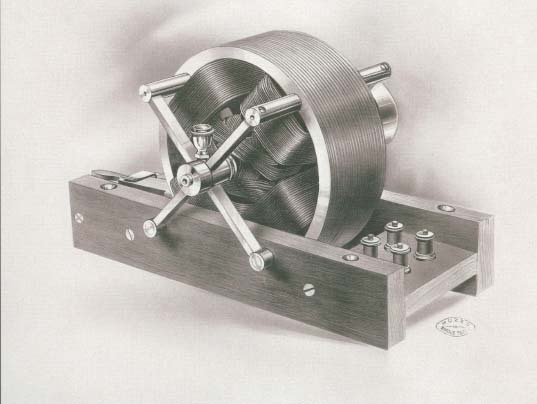
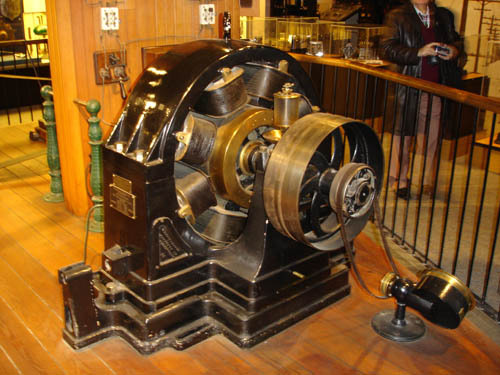
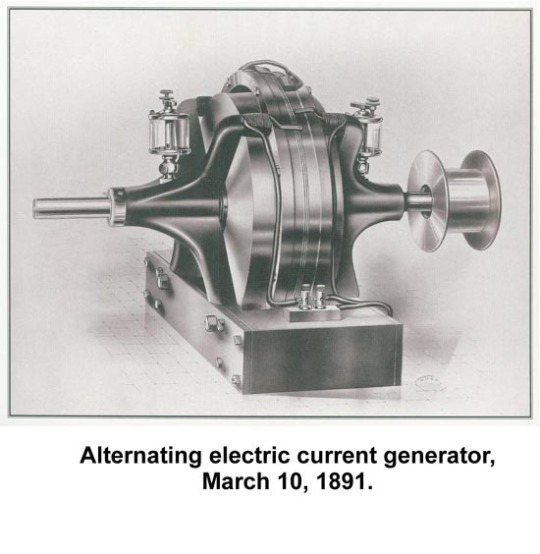
The induction motor, pictured above, was invented by Nikola Tesla in 1888, with financial backing from George Westinghouse. Essentially, these motors enabled the use of alternating current for establishing what we now call the electrical grid, and the large-scale use of electricity generally.
Westinghouse, having invested most of the money, and having just enough scientific understanding to suspect (correctly) that alternating current, not direct current (as Edison wrongly imagined), would be more practical (and lucrative) for lighting up cities. received most of the profit, while the genius of Nikola Tesla, as with his contributions to radio technology, was largely forgotten in his own time.
As for Tesla's bitter rival Edison, his public humiliation for attempting to discredit alternating current was a rare public comeuppance for Edison who, in stark contrast to Tesla, generally received more than his fair share of the press and public credit.
#Nikola Tesla#induction motor#alternating current#electricity#technology#science#history#historical#Victorian#George Westinghouse#I own nothing
0 notes
Text
The history of electric power in the United States

I. Introduction
From the original candlelight and kerosene lamps to modern high-voltage direct current transmission technology, the development of electricity in the United States is an epic of technological innovation and social progress. In this article, we'll take an in-depth look at the development of electricity in the United States, from its origins to the modern electric system, and the key people, technologies, and events involved.
2. Early electricity: from static electricity to direct current
At the end of the 18th century, the mysterious properties of electricity attracted the attention of many scientists. American scientists and inventors, such as Benjamin Franklin, made important contributions to the study of electricity. Through his kite experiment, Franklin proved that lightning and sparks are different manifestations of the same phenomenon. This discovery laid the foundation for early electrostatic research.
In the early 19th century, scientists began to explore how to convert electricity into practical energy. In 1831, Michael Faraday discovered the laws of electromagnetic induction, which laid the foundation for the development of generators and transformers. Joseph Henry and William Spotts of the United States were important figures during this period. Their work had a profound impact on the research of alternating current (AC) and direct current (DC).
3. The battle between alternating current and direct current: The rise and fall of Edison
At the end of the 19th century, with the continuous development of the power system, the dispute between alternating current and direct current became more and more intense. As a staunch supporter of direct current, Thomas Edison invented the first practical incandescent light bulb in his laboratory, but his plan was not ideal in terms of long-distance transmission. In contrast, the alternating current systems of Nikola Tesla and George Westinghouse, among others, showed greater potential.
This technological battle culminated in the 1893 Niagara Falls World's Fair. Edison's company attempted to prove that their DC system could meet this huge power demand, but ultimately failed. Westinghouse's AC system won the contract and demonstrated its capabilities at the expo. The failure marked the beginning of Edison's decline in leadership in the electric power industry.
4. The rise of modern power systems: the maturity of high-voltage DC transmission and AC power grids
After entering the 20th century, as the demand for electricity from industry and households continued to grow, high-voltage direct current transmission (HVDC) began to become a research hotspot. This technology enables long-distance, large-capacity power transmission. In the United States, many companies and scientific research institutions are involved in the research and development of HVDC. Today, the United States has built a massive electric power system that connects thousands of power stations and millions of homes and businesses through high-voltage transmission lines. This system ensures reliable power supply while also being able to flexibly respond to changes in demand and the integration of renewable energy sources.
However, the management and control of power systems have become an increasingly prominent issue. In order to solve this problem, researchers and engineers began to study the application of artificial intelligence (AI) in power systems. AI can monitor grid status in real time, predict demand changes, and automatically adjust power generation and transmission lines, thereby improving the reliability and efficiency of power supply.
5. Future Outlook: Integration of Smart Grid and Renewable Energy
Entering the 21st century, the U.S. power system is facing a series of new challenges and opportunities. With the large-scale deployment of renewable energy sources (such as solar and wind energy), how to integrate these energy sources into existing power systems has become an important issue. The development of smart grids makes it possible to achieve this goal. Smart grid can monitor and control the operating status of the power grid in real time through advanced sensors, communication and control technologies. This not only helps improve the reliability and efficiency of electricity supply, but also helps reduce energy consumption and carbon emissions.
In addition, with the popularity of electric vehicles, the load characteristics of the power grid are also changing. The charging needs of electric vehicles pose new challenges to the stable operation of the power grid. To address this challenge, researchers and engineers are studying how to incorporate electric vehicles into smart grids to make them a dispatchable resource that can help balance grid loads and improve energy efficiency.
6. Conclusion
The history of the development of electricity in the United States is an epic of technological innovation and social progress. From the initial research on electrostatics and the rise of direct current systems to the application of modern high-voltage direct current transmission and smart grids, the U.S. power industry has always been at the forefront of technological innovation. However, facing the challenges and opportunities of future renewable energy, the U.S. power industry still needs to continue to innovate and adapt to changes. Only in this way can we ensure the sustainable development of the future power system and meet the needs of society.
0 notes
Photo

On this date in 1883, the first electric lighting system used overhead wires began service in Roselle, New Jersey. The system was built by Thomas Edison as part of an experiment; he wanted to see whether he could light an entire neighborhood with electricity using a shared central generating station.
Thirty-two years later to the day, in 1915, French engineer and inventor Georges Claude made his own contribution to lighting history when he patented the neon discharge tube. This patent gave his company, Claude Neon Lights, a monopoly in the United States through the early 1930s on the production of the neon signs that his patent made possible.
Both inventors have left a complicated legacy. Claude was later imprisoned from 1945 to 1950 for propaganda work favoring collaboration during the German occupation of France. And, as far as Edison goes, an elephant never forgets (R.I.P. Topsy). But we could all use a little extra light now and then, so in honor of their achievements, here’s a photograph of the NOMA Electric Corporation’s display at the Electrical Association of New York’s 1934 National Electrical and Radio Exposition. NOMA was formed in 1925 as the National Outfit Manufacturer's Association out of a trade group of around 14 small manufacturers who consolidated to better compete against large manufacturers.
The company became best known for making Christmas lights, seen here, and was once the world’s largest manufacturer of the products. It’s also credited with inventing the Christmas bubble light in 1946, and, to the best of our knowledge, never electrocuted an elephant or collaborated with Nazis. So that’s nice.
This photograph is part of Hagley Library’s National Electrical and Radio Exposition album (Accession 2015.289). The trade show was held in New York City at Madison Square Garden from September 19th to the 29th, and was one of the annual radio and electronic products trade shows held in the city in the 1920s through the 1940s.
Similar radio expositions during the era were hosted in other major U.S. cities sponsored by local trade associations that brought together manufacturers, retailers, and customers.The expositions included national manufacturers and large retailers from around the country to display, demonstrate, and sell their products.
Among the more prominent products featured at the expositions during this period were radios, household appliances (vacuums, ovens, refrigerators, etc.), home/industrial lighting, and heating/air conditioning technology.This collection includes 45 photographs taken during the exposition. The photographs are primarily of various companies' individual displays. Companies represented include RCA, Westinghouse Electric, Singer Sewing Machine, General Electric, Hoover, Leonard, among others. To view more photographs from this album online now, click here.
#OTD#on this date#on this day#January 19#Thomas Edison#Thomas Alva Edison#history of technology#New Jersey history#Roselle NJ#electric lighting#Georges Claude#Claude Neon Lights#neon lighting#neon signs#inventors#Topsy#Electrical Association of New York#1930s#NOMA Electric Corporation#National Electrical and Radio Exposition#Madison Square Garden#Christmas lights#holiday decorations#bubble lite#bubble light#trade show
19 notes
·
View notes
Text
Nikola Tesla Shares His Lifetime's Work and Discoveries on 81st Birthday
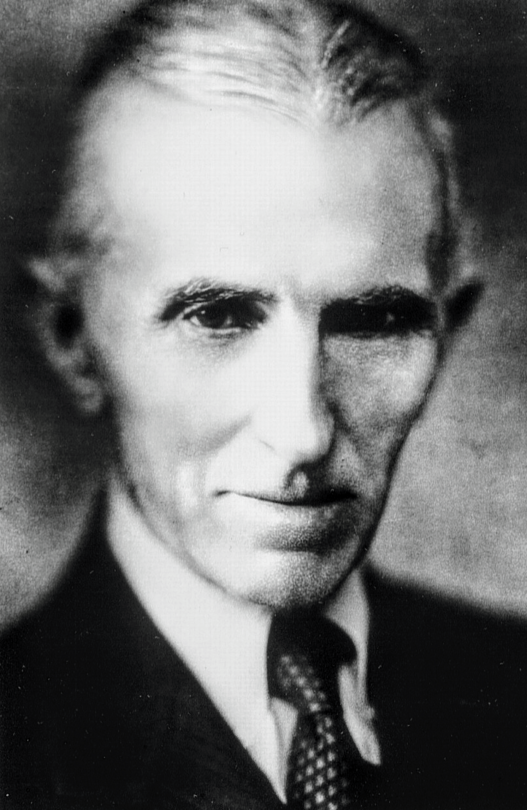
"At the close of 1889, having worked one year in the shops of George Westinghouse, Pittsburgh, I experienced so great a longing for resuming my interrupted investigations that, notwithstanding a very tempting proposition by him, I left for New York to take up my laboratory work, but owing to pressing demands by several foreign scientific societies I made a trip to Europe where I lectured before the Institution of Electrical Engineers and Royal Institution of London and the Societe de Physique in Paris. After this and a brief visit to my home in Yugoslavia I returned to this country in 1892 eager to devote myself to the subject of predilection on my thoughts: the study of the universe.
"During the succeeding two years of intense concentration I was fortunate enough to make two far-reaching discoveries. The first was a Dynamic Theory of Gravity, which I have worked out in all details and hope to give to the world very soon. It explains the causes of this force and the motions of heavenly bodies under its influence so satisfactorily that it will put an end to idle speculations and false conceptions, as that of curved space. According to the relativists, space has a tendency to curvature owing to an inherent property or presence of celestial bodies. Granting a semblance of reality to this fantastic idea, it is still self-contradictory. Every action is accompanied by an equivalent reaction and the effects of the latter are directly opposite to those of the former. Supposing that the bodies act upon the surrounding space causing curvature of the same, it appears to my simple mind that the curved spaces must react on the bodies and, producing the opposite effects, straighten out the curves, Since action and reaction are coexistent, it follows that the supposed curvature of space is entirely impossible. But even if it existed it would not explain the motions of the bodies as observed. Only the existence of a field of force can account for them and its assumption dispenses with space curvature. All literature on this subject is futile and destined to oblivion. So are also all attempts to explain the workings of the universe without recognizing the existence of the ether and the indispensable function it plays in the phenomena.
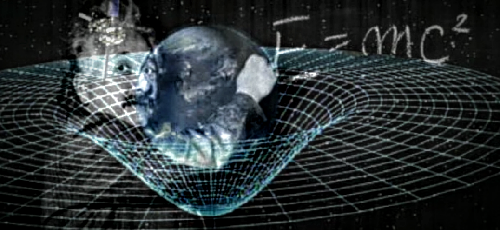
"My second discovery was a physical truth of the greatest importance. As I have searched the scientific records in more than half dozen languages for a long time without finding the least anticipation, I consider myself the original discoverer of this truth, which can be expressed by the statement: There is no energy in matter other than that received from the environment. On my 79th birthday I made a brief reference to it, but its meaning and significance have become clearer to me since then. It applies rigorously to molecules and atoms as well as the largest heavenly bodies, and to all matter in the universe in any phase of its existence from its very formation to its ultimate disintegration.
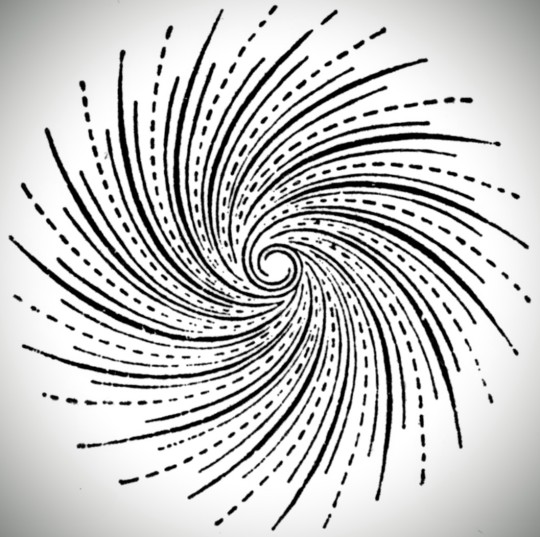
"Being perfectly satisfied that all energy in matter is drawn from the environment, it was quite natural that when radioactivity was discovered in 1896. I immediately started a search for the external agent which caused it. The existence of radioactivity was positive proof of the existence of external rays. I had previously investigated various terrestrial disturbances affecting wireless circuits but none of them or any others emanating from the earth could produce a steady sustained action and I was driven to the conclusion that the activating rays were of cosmic origin. This fact I announced in my papers on Roentgen rays and Radiations contributed to the Electrical Review of New York, in 1897. However, as radioactivity was observed equally well in other widely separated parts of the world, it was obvious that the rays must be impinging on the earth from all directions. Now, of all bodies in the cosmos, our sun was most likely to furnish a clue as to their origin and character. Before the electron theory was advanced, I had established that radioactive rays consisted of particles of primary matter not further decomposable, and the first question to answer was whether the sun is charged to a sufficiently high potential to produce the effects noted. This called for a prolonged investigation which culminated in my finding that the sun’s potential was 216 billions of volts and that all such large and hot heavenly bodies emit cosmic rays. Through further solar research and observation of Novae this has been proved conclusively, and to deny it would be like denying the light and heat of the sun. Nevertheless, there are still some doubters who prefer to shroud the cosmic rays in deep mystery. I am sure that this is not true for there is no place where such a process occurs in this or any other universe beyond our ken.
"A few words will be sufficient in support of this contention. The kinetic and potential energy of a body is the result of motion and determined by the product of its mass and the square of velocity. Let the mass be reduced, the energy is diminished in the same proportion. If it be reduced to zero the energy is likewise zero for any finite velocity. In other words, it is absolutely impossible to convert mass into energy. It would be different if there were forces in nature capable of imparting to a mass infinite velocity. Then the product of zero mass with the square of infinite velocity would represent infinite energy. But we know that there are no such forces and the idea that mass is convertible into energy is rank nonsense.
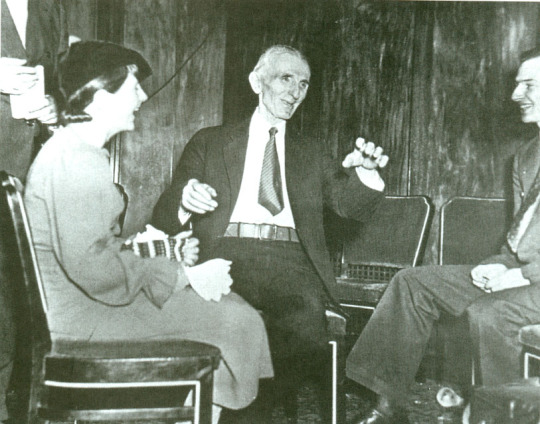
"While the origin and character of the rays observed near the earth’s surface are sufficiently well ascertained, the so-called cosmic rays observed at great altitudes presented a riddle for more than 26 years, chiefly because it was found that they increased with altitude at a rapid rate. My investigations have brought out the astonishing fact that the effects at high altitudes are of an entirely different nature, having no relation whatever to cosmic rays. These are particles of matter projected from celestial bodies at very high temperature and charged to enormous electrical potentials. The effects at great elevations, on the other hand, are due to waves of extremely small lengths produced by the sun in a certain region in the atmosphere. This is the discovery which I wish to make known. The process involved in the generation of the waves is the following: The sun projects charged particles constituting an electric current which passes through a conducting stratum of the atmosphere approximately 10 kilometers thick enveloping the earth. This is a transmission of energy exactly as I illustrated in my experimental lectures in which one end of a wire is connected to an electric generator of high potential, its other end being free. In this case the generator is represented by the sun and the wire by the conducting air. The passage of the solar current involves the transference of electric charges from particle to particle with the speed of light, thus resulting in the production of extremely short and penetrating waves. As the air stratum mentioned is the source of the waves it follows that the so-called cosmic rays observed at great altitudes must increase as this stratum is approached. My researches and calculations have brought to light the following facts in this connection:
(1) the intensity of the so-called cosmic rays must be greatest in the zenithal portion of atmosphere;
(2) the intensity should increase more and more rapidly up to an elevation of about 20 kilometers where the conducting air stratum begins;
(3) from there on the intensity should fall, first slowly and then more rapidly, to an insignificant value at an altitude of about 30 kilometers;
(4) the display of high potential must occur on the free end of the terrestrial wire, that is to say, on the side turned away from the sun. The current from the latter is supplied at a pressure of about 216 billion volts and there is a difference of 2 billion volts between the illuminated and the dark side of the globe. The energy of this current is so great that it readily accounts for the aurora and other phenomena observed in the atmosphere and at the earth’s surface.
"For the time being I must content myself with the announcement of the salient facts, but in due course I expect to be able to give more or less accurate technical data relating to all particulars of this discovery.
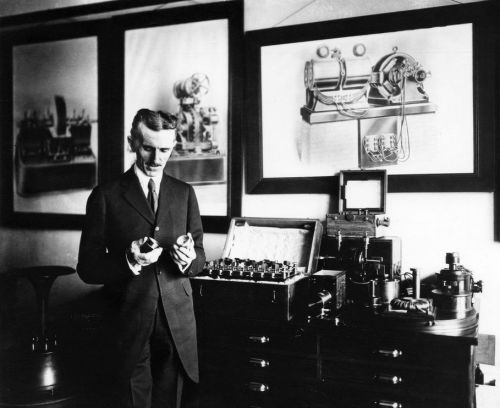
"To go to another subject, I have devoted much of my time during the year to the perfecting of a new small and compact apparatus by which energy in considerable amounts can now be flashed through interstellar space to any distance without the slightest dispersion, I had in mind to confer with my friend George E. Hale, the great astronomer and solar expert, regarding the possible use of this invention in connection with his own researches. In the meantime, however, I am expecting to put before the Institute of France an accurate description of the devices with data and calculations and claim the Pierre Guzman Prize of 100,000 francs for means of communication with other worlds, feeling perfectly sure that it will be awarded to me. The money, of course, is a trifling consideration, but for the great historical honor of being the first to achieve this miracle I would be almost willing to give my life.
"My most important invention from a practical point of view is a new form of tube with apparatus for its operation. In 1896 I brought out a high potential targetless tube which I operated successfully with potentials up to 4 million volts from ‘96 to '98. This device was adopted by many imitators and with slight modifications it is employed even now in all research laboratories and scientific institutions here and in other countries, and virtually all atomic investigations are carried on with it. At a later period I managed to produce very much higher potentials up to 18 million volts, and then I encountered unsurmountable difficulties which convinced me that it was necessary to invent an entirely different form of tube in order to carry out successfully certain ideas I had conceived. This task I found far more difficult than I had expected, not so much in the construction as in the operation of the tube. For many years I was baffled in my efforts, although I made a steady slow progress. Finally though, I was rewarded with complete success and I produced a tube which it will be hard to improve further. It is of ideal simplicity, not subject to wear and can be operated at any potential, however high, that can be produced. It will carry heavy currents, transform any amount of energy within practical limits, and it permits easy control and regulation of the same. I expect that this invention, when it becomes known, will be universally adopted in preference to other forms of tubes, and that it will be the means of obtaining results undreamed of before. Among others, it will enable the production of cheap radium substitutes in any desired quantity and will be, in general, immensely more effective in the smashing of atoms and the transmutation of matter. I am hopeful that it will be possible by its use to carry out a process in which there should be no misses whatever, but only hits. However, this tube will not open up a way to utilize atomic or subatomic energy for power purposes. According to the physical truth I have discovered there is no available energy in atomic structure, and even if there were any, the input will always greatly exceed the output, precluding profitable, practical use of the liberated energy.
"Some papers have reported that I had promised to give a full description of my tube and its accessories on the present occasion. This has caused me a considerable annoyance--as, owing to some obligations I have undertaken regarding the application of the tube for important purposes, I am unable to make a complete disclosure now. But as soon as I am relieved of these obligations a technical description of the device and of all the apparatus will be given to scientific institutions.
"There is one more discovery which I want to announce at this time, consisting of a new method and apparatus for the obtainment of vacua exceeding many times the highest heretofore realized. I think that as much as one-billionth of a micron can be attained. What may be accomplished by means of such vacua is a matter of conjecture, but it is obvious that they will make possible the production of much more intense effects in electron tubes. My ideas regarding the electron are at variance with those generally entertained. I hold that it is a relatively large body carrying a surface charge and not an elementary unit. When such an electron leaves an electrode of extremely high potential and in very high vacuum, it carries an electrostatic charge many times greater than the normal. This may astonish some of those who think that the particle has the same charge in the tube and outside of it in the air. A beautiful and instructive experiment has been contrived by me showing that such is not the case, for as soon as the particle gets out into the atmosphere it becomes a blazing star owing to the escape of the excess charge.
"The great quantity of electricity stored on the particle is responsible for the difficulties encountered in the operation of certain tubes and the rapid deterioration of the same."
–Nikola Tesla
"Dynamic Theory of Gravity." July 10, 1937 (Prior to interviews with the press on his 81st birthday observance).
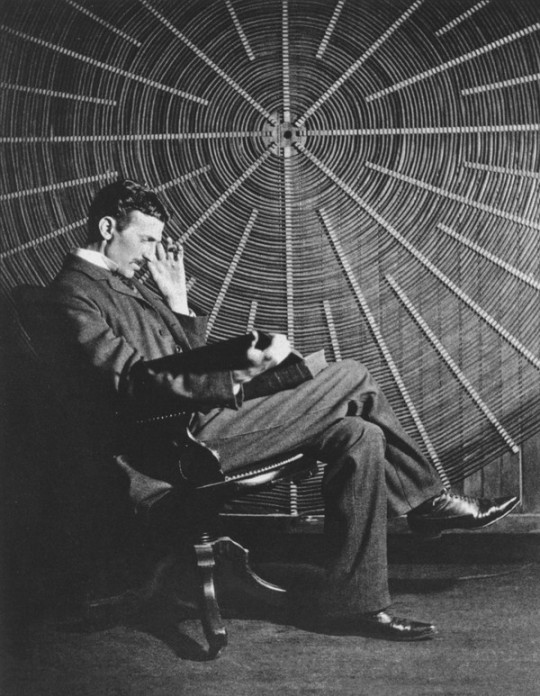
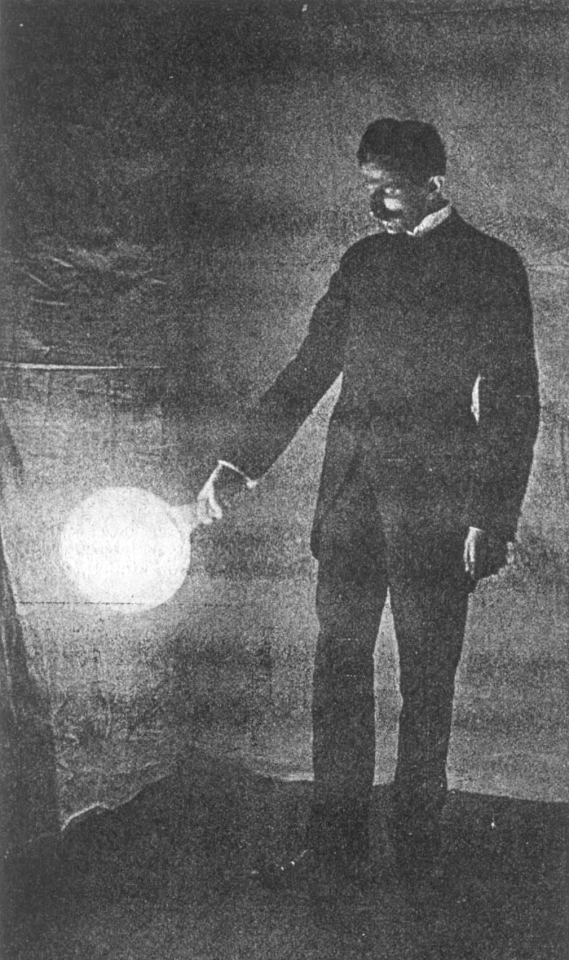
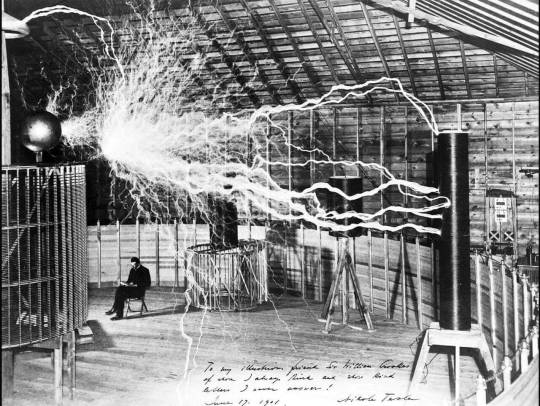
#nikola tesla#science#physics#history#engineering#discovery#experiments#gravity#cosmic rays#radiation#radioactivity#theory of relativity#albert einstein#interplanetary communication#faster than light#electrons#quotes#ahead of his time#ahead of our time
1K notes
·
View notes
Photo
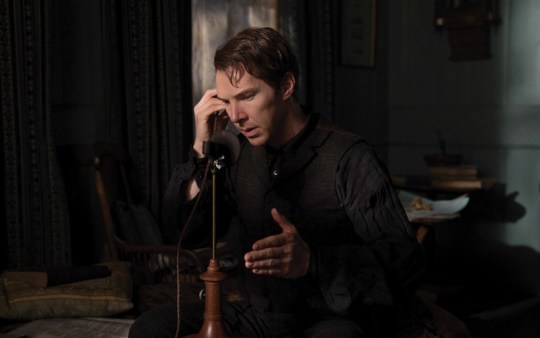
Benedict Cumberbatch on Playing Thomas Edison in “The Current War”
(source) photos: Dean Rogers
Competition breeds innovation. History is full of rivals who, by working against one another, continuously pushing to be better, have inadvertently contributed to the greater good. Apple versus Microsoft is one such example, paving the way for computing as we know it today. There’s Elon Musk’s SpaceX versus Jeff Bezos’ Blue Origin – the modern day space race. However, few rivalries have changed the world as much as the War of Currents. It was a battle of entrepreneurial titans, of AC versus DC, of George Westinghouse versus Thomas Edison. Now, Benedict Cumberbatch and Michael Shannon are bringing the story to the big screen.
Now, with The Current War, the story of this famous rivalry is coming to the big screen. The Sorcerer Supreme himself, Benedict Cumberbatch, explores the very real kind of magic in Thomas Edison’s use of electricity, while the versatile Michael Shannon plays successful businessman and entrepreneur George Westinghouse. Slated to release on October 25, 2019, The Current War explores this famous rivalry of the two titans of electricity. We had the opportunity to discuss with Cumberbatch the various aspects of his character and this historic conflict.
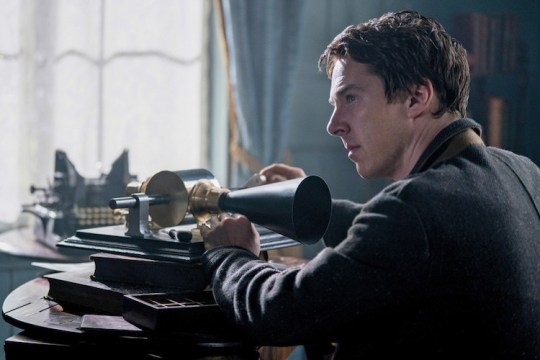
Innovation & Tech Today: What did you do to prepare to play the man who’s been called “America’s Greatest Inventor?”
Benedict Cumberbatch: Well, I read much as I could… There was an excerpt of his diary, which is a little known publication (I think out of print now) that production managed to get a hold of for me. That was a wonderful insight…
I researched into specifics to do with his deafness, to do with the electric current and its distribution. I was speaking to people who know a lot more about these things, including our art department on the film itself in pre-production, who were pretty fantastic. I always find that leaning on some of the experts around you is an incredibly helpful thing to do. Then the book itself that it’s inspired by, [War of the Currents]. It’s an amazing story of three men, three titans of invention.
I&T Today: Did you learn anything about him that the average person might not know?
Benedict Cumberbatch: I guess the regrets or the understanding of what he’d sacrificed with his family, how hard he worked and what cost that had on the intimacy that he had, and lacked, with his family. Not to judge the man, but I think he ended up repeating his mistakes, if they were mistakes. Or is it just his nature? But I think it still tortured him as well as being something he decided to do. That work always came first. That was an interesting thing to explore… He was very fond of coffee. He’d often sleep in the laboratory and work through the night.
He was very fond of his men, he treated them honestly and truthfully and, at times, harshly, but there was a lot of celebratory machismo and backslapping, and it was a proper communal work environment in Menlo Park. That’s the first blueprint for the research and development departments we now have in a lot of industries in the Silicon Valley. There was a lot of comradery and I think there were certain pressure points in this race for the control of the current where he probably didn’t behave at his best. There’s a human element to that. It’s not all just good natured thigh slapping. There was a lot of hard work and a lot of spilled milk.
How ferocious a reader he was, I didn’t know. I don’t know how general knowledge that is about him, but it’s gobsmacking. I mean volumes of literature all the time. He never stopped reading. A lot of the diaries, accounts of passages, fiction, as well as a lot of history, and of course science and nonfiction actual works. He’s extraordinary. He writes about books as mood enhancers as well, how they transport him. He writes about his daydreams and his dreams, and however racy they get. He touches upon a fantasy life as well. He’s just very funny, and takes great delight in the brilliance of other people as well.
I&T Today: The Current War is revolved around this rivalry, specifically between Edison and George Westinghouse, played by Michael Shannon. How has it been working with Shannon as your rival, as your opposite?
Benedict Cumberbatch: Well, it’s a bit like the famous scene in Heat where the two rivals operate in such isolated opposition or polarity that they really are arguing two completely different cases. They don’t crossover much, that’s the great thing. Sadly, I only got two instances where Michael and I were on the same set, but obviously one of those is a big scene, a lot like the café scene that’s between De Niro and Pacino.
Michael is an extraordinary actor. I’ve been a huge fan of all of his work, and for a long time. He has such command of characterization, of how to achieve so much with seemingly so little, but inside he’s fearlessly intelligent and very heartfelt.
I&T Today: Edison isn’t the first scientist you’ve played. You’ve also portrayed Alan Turing in The Imitation Game and others. How has this experience compared to that of Alan Turing?
Benedict Cumberbatch: I think Edison obviously has an eccentricity: the workaholic nature, the excessive nature, the competitiveness, and what were rumored to be issues of hygiene because of that. I still think that he operated on a very different plane from the other scientists I’ve portrayed, and Turing in particular. Personality-wise, he’s bombastic, he’s a salesman, he’s confident up front. He’d be as confident in front of a podium as he would be in his workshop. Entertaining and regaling with facts and amusing anecdotes and funny asides. You know he was a very public persona.
Whereas Alan Turing was a very awkward, retiring, quiet, and shy man by comparison. Often, people say “you play lots of scientists.” Yes, but I also play lots of different human beings, and they couldn’t be two more different human beings in my opinion.
Alan was lean and trim, a very competent long-distance runner. And I think Edison would not be a competent long distance runner. He was energetic, but I don’t think it went too far in the direction of cardiovascular workouts.
And the lure for this wasn’t just another scientist, but it was another extraordinary human being. It was tempting, had some aspects that I had never played before. I always try to look for work that gives me something new to think about.
I&T Today: How has playing Edison compared to some of the fictional intellectuals you’ve played? Like Sherlock Holmes or Dr. Strange?
Benedict Cumberbatch: The Wizard of Menlo Park and the Sorcerer Supreme. I think what’s extraordinary about what Edison did was this was magic we’re still living with. I’ve got two, very young, children. And to see the look in their eyes when lights go on and off for the first time, and they really take that in. It’s a very bold and frank reminder of what an extraordinary thing it is. Doing this Promethean thing of lighting unlight with light, and creating daylight, and interrupting circadian rhythms, and bringing convenience to every part of our lives so we can evolve physically and intellectually, in a different way. These are incredibly real things, and to be part of storytelling or a storyteller trying to imagine and envision what that would be like to be at the forefront of that invention is terribly exciting.
I&T Today: As you studied this historic rivalry, do you think there are comparisons to some more modern rivalries? Bill Gates vs. Steve Jobs, for instance?
Benedict Cumberbatch: Of course there are. How can there not be? I think there have been rivalries in all areas in industry. Of course now, a lot of these powerhouses in Silicon Valley, these men, captains of our modern tech industry, Noskin and Jeff Bergin, Gates and Steve Jobs. You know they’ve become as iconic as their products in many ways. And rightfully so. And I think the men and women who are captaining those areas of industry now always acknowledge their debt to people like Westinghouse, Edison, and of course, Tesla.
#benedict cumberbatch#the current war:directors cut#hard working actor works hard#i love his interviews - he prepares so diligently#for all his parts - no wonder he's so well respected for his craft
39 notes
·
View notes
Text
Pittsburgh Magazine 50 Greatest Pittsburghers of All Time
In celebration of its 50th anniversary, Pittsburgh Magazine recently issued a review of the “50 Greatest Pittsburghers of All Time” (January 2019). The magazine’s editorial team sought to rank those who “best embodied the idea of a ‘greatest’ Pittsburgher…those who contributed to Pittsburgh’s story – while becoming great in their own right.”
Not only does the list highlight 50 great individual Pittsburghers, it also highlights more than 200 years of Pittsburgh history. Even more interesting? Many of these stories are documented in our stacks, either in the papers of a “Greatest Pittsburgher” or within a related collection.
We thought it would be fun to highlight some of those collections in the hopes that today’s Pittsburghers continue to explore our rich documentary history. The following list is presented in the order of Pittsburgh Magazine’s ranking:
• Fred Rogers [Mister Rogers’ Neighborhood Collection]
American television personality Fred Rogers moved to Pittsburgh in the 1950s to work as a puppeteer for the public television station (WQED) children’s show The Children’s Corner. He studied theology at the Pittsburgh Theological Seminary and in 1963 was ordained a minister of the United Presbyterian Church. Mister Rogers’ Neighborhood began in Toronto, moved to WQED in Pittsburgh in 1966, and onto PBS in 1970. The popular program ran for 895 episodes, from 1968-2001. The bulk of this collection relates to the production and promotion of the program from 1970 to 1990 and includes publicity photographs, press kits, scripts, and episode summaries and records.
• Jonas Salk [Jonas Salk Polio Collection (UA.90.F89)]
Jonas Salk accepted a research appointment at the University of Pittsburgh medical school in 1947 and began work on what would become his breakthrough polio vaccine the following year. Human trials began in 1954 and the vaccine was declared viable for mass production in April 1955. The Jonas Salk Polio Vaccine Collection consists of materials relating to the history of polio and the polio vaccine research and trials. Digital reproductions of some photographs are available online.
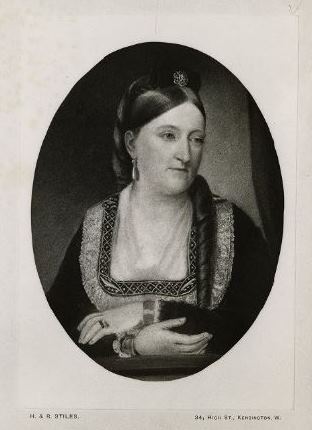
• Mary E. Schenley [Mary Schenley Land Deed (AIS.2015.07)]
Upon her father’s death (William Croghan Jr.) in 1850, Mary Schenley inherited a substantial amount of valuable Pittsburgh land originally belonging to her mother’s father, James O’Hara, making Schenley the largest property owner in Allegheny County. This document is an indenture, or real estate deed, between Edward and Mary Schenley and the Pennsylvania Railroad (PRR). The land described in this indenture became an important part of the construction of Pittsburgh’s passenger train station, Penn Station, built by the Pennsylvania Railroad between 1898-1903
• H.J. Heinz [United Food and Commercial Workers International Union Local 325, Pittsburgh, Pa. Records (AIS.1997.15)]
Formerly known as Canning and Pickle Workers Union Local 325, United Foods and Commercial Workers International Union Local 325 was founded in 1937 to represent employees of the H.J. Heinz Company, chiefly employed at the North Side plant in Pittsburgh. The records include contract books from 1941-1994, union constitutions and by-laws, a job description book, union newsletters, photographs, and oral histories. Also included are various publications of the H.J. Heinz Company written for their employees.
• Dr. Thomas Starzl [Thomas E. Starzl Papers (UA.90.F68)]
Dr. Thomas Starzl joined the University of Pittsburgh School of Medicine in 1981, where he continued to pioneer groundbreaking procedures for organ transplantation and advances in immunology he had begun earlier in his career. Learn more about his prolific medical career by visiting the Dr. Thomas E. Starzl Website, created in conjunction with our Thomas E. Starzl Papers.
• George Westinghouse [Westinghouse Electric and Manufacturing Company Contracts Collection (AIS.1963.24)]
Industrialist and inventor of the compressed air brake, George Westinghouse incorporated the Westinghouse Electric & Manufacturing Company in 1891. With its giant factory located in East Pittsburgh, Pa., the Westinghouse Electric & Manufacturing Company soon became the Edison General Electric Company's main rival in the contest to provide electricity to the United States. Records include blueprints, photographs, carbon copies of telegrams, signed forms, memorandums, and correspondence.
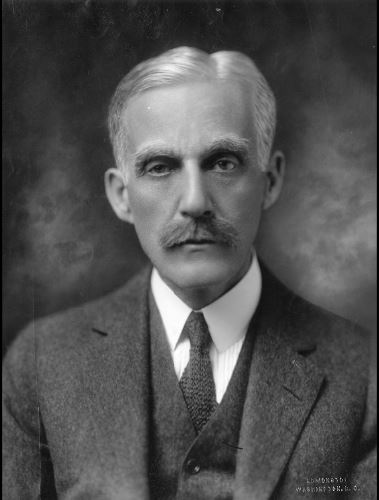
• Andrew Mellon [A. W. Mellon Educational and Charitable Trust Records (AIS.1980.29)]
Founded by Andrew W. Mellon in 1930, the A. W. Mellon Educational and Charitable Trust made over $200,000,000 in contributions during its 50-year life, including funding for the National Gallery of Art,
Carnegie Museums of Pittsburgh, Pitt’s Graduate School of Public Health, and the Metropolitan Pittsburgh Educational Television Station, forerunner of WQED. The A. W. Mellon Educational and Charitable Trust records document the internal business operations of the Trust and its relation with the organizations, institutions, and programs that it funded.
• Henry Clay Frick [Henry Clay Frick Business Records (AIS.2002.06)]
Industrialist Henry Clay Frick made his millions in the coke, coal, and steel industries of late 19th century western Pennsylvania, ascending to Chairman of the Carnegie Steel Company (the precursor to the United States Steel Corporation) before falling out with Andrew Carnegie and eventually shifting his business and social interests to New York City. Later in life, Frick supported the arts and education philanthropically in both New York and Pittsburgh. The Henry Clay Frick Business Records contain material reflecting the business and financial activities of Frick (1849-1919) with particular relevance to Pittsburgh and the western Pennsylvania region. The bulk of the collection dates from 1881 to 1914, when Frick was most active in the coal and steel industry in Pittsburgh. Digital reproductions of this collection are available online.
• David L. Lawrence [David Leo Lawrence Papers (AIS.1978.15)]
David L. Lawrence – Pitt educated and a former University Trustee – served as Mayor of Pittsburgh for 14 years before serving one term as Governor of Pennsylvania. He stepped down in 1963 to become a special assistant to Presidents Kennedy and Johnson and remained in that capacity until his death in 1966. These papers contain biographical materials, personal correspondence, materials from his trip to Japan in 1962, and materials regarding local and state Democratic Party political activities between 1960-1966.
• Hugh Henry Brackenridge [Hugh Henry Brackenridge and Andrew Watson Papers (DAR.1937.04)]
Scottish immigrant Hugh Henry Brackenridge served in George Washington's army during the Revolutionary War as a chaplain, and is wholly or partly credited with the establishment of Allegheny County, Pittsburgh’s first bookstore and newspaper, and the Pittsburgh Academy (University of Pittsburgh). He served in the Pennsylvania State Assembly and later on the State Supreme Court. The majority of the collection consists of the business papers and correspondence of Hugh Henry Brackenridge and Andrew Watson regarding various properties in Pittsburgh. Digital reproductions of this collection are available online.
• Stephen Foster [Center for American Music Foster Hall Collection]
Stephen Foster grew up in Allegheny City (now Pittsburgh's North Side), where he heard contrasting musical styles in Scots-Irish, German, Italian and American neighborhoods and in public halls. From 1851 until his death, he wrote songs professionally, becoming the first person in the United States to earn his living solely through the sale of compositions to the public including "Lou'siana Belle”, "Susanna" (Oh! Susanna), and "Jeanie with the Light Brown Hair". The Foster Hall Collection provides a valuable record of Stephen Foster's composition process, nineteenth century life in the United States, the music business, Pittsburgh history, and Foster's legacy. Digital reproductions of portions of the collection are available online.
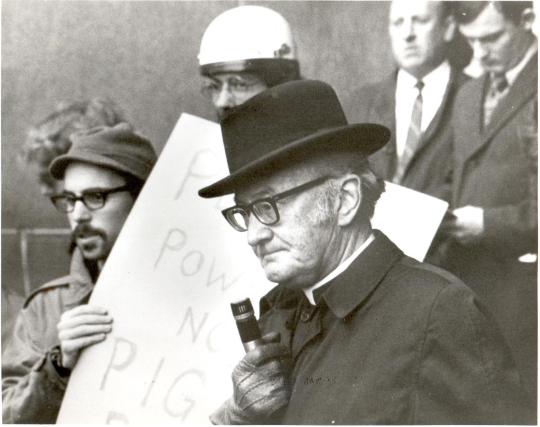
• Father Charles Owen Rice [Charles Owen Rice Papers (AIS.1976.11)]
Msgr. Charles Owen Rice was ordained into the priesthood in 1934 following studies at Duquesne University and St. Vincent Seminary, both in Pittsburgh. After ordination in 1934, he became involved with labor unions, aiding in founding the Association of Catholic Trade Unionists. Rice also founded St. Joseph's House of Hospitality, a long running weekly radio program, and the Catholic Radical Alliance. The collection includes correspondence, subject files, transcripts of radio broadcasts, manuscripts, case files, family papers, audiotapes, photographs and a film.
• Dan Marino [Documenting Pitt]
Hometown hero Dan Marino was born in Pittsburgh’s South Oakland neighborhood, mere blocks from the University where he would star as a student-athlete from 1979 until 1982. As quarterback of the Pitt Panthers football team Marino led the team to a No. 1 ranking and 1982 Sugar Bowl victory over Georgia. Check out Documenting Pitt for digitized versions of Pitt Football publications, the Pitt News student newspaper, and yearbooks documenting the Marino years.
• Gene Kelly [Gene Kelly Alumni Files (UA.6.3.2)]
Eugene Curran Kelly was born in Pittsburgh, and following a brief stint at Penn State University, returned home and received a Bachelor of Science Degree in Economics from Pitt in 1933. Kelly found success as a multi-talented individual excelling at acting, singing, dancing, choreographing, producing, as well as motion picture directing. This collection contains collected materials including correspondence, news clippings, a scrapbook, and a photo album.
• Myron Cope [Pitt News (Documenting Pitt)]
Myron Kopelman, beloved Pittsburgh Steelers radio personality, was a Pitt Alum who cut his teeth as a sports writer for the Pitt News between 1947 and 1950. The University Archives maintains a complete collection of The Pitt Weekly and Pitt News, which were recently digitized and made available via Documenting Pitt.
John Forbes [Darlington Digital Library]
General John Forbes, a Scottish-born British general who served in America during the French and Indian war, was responsible for capturing Fort Duquesne and renaming it Fort Pitt. Our Darlington Digital Library, created from the first major collection of books, manuscripts, atlases, and maps donated to the University of Pittsburgh by William M. Darlington, documents early colonial American history in Western Pennsylvania and the Ohio Valley.

• Elsie Hillman [Elsie H. Hillman Papers (AIS.2013.02)]
Elsie Hilliard Hillman was widely recognized for her political leadership in the Republican Party at the local, state, and national levels, playing a vital role in the elections of politicians such as Governors Dick Thornburgh and Tom Ridge, Senator H. John Heinz III, State Treasurer Barbara Hafer and President George H.W. Bush. Her dedication to her hometown of Pittsburgh resonated through both her civic and philanthropic leadership. The collection contains a variety of materials including correspondence, meeting minutes, memoranda, reports, newspaper clippings, photographs, and audio-video materials. The Elsie H. Hillman Website also provides an overview of her life and accomplishments with some digital reproductions of selected items.
- Alex Toner
4 notes
·
View notes
Text
ZENITH PRESENTS: A SALUTE TO TELEVISION’S 25TH ANNIVERSARY
September 10, 1972
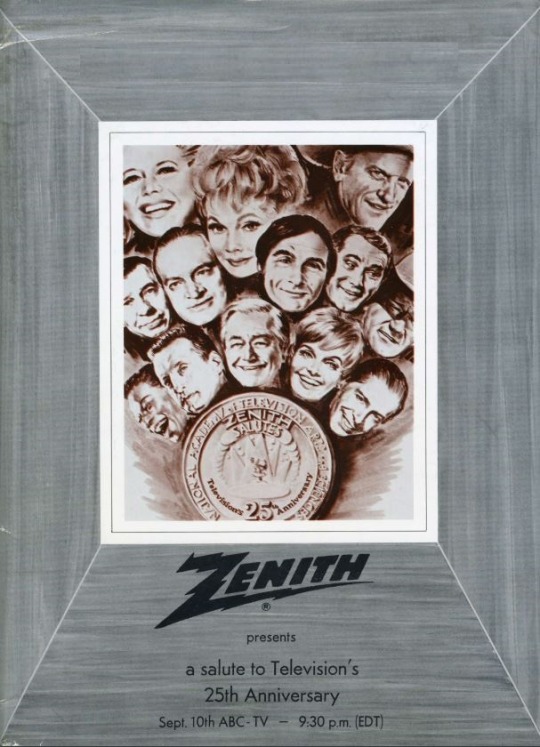
Produced & Directed by Marty Pasetta
Written by John Bradford, Lenny Weinrib, Bob Wells

Cast (in alphabetical order)
Judith Anderson, honoree accepting for “Hallmark Hall of Fame”
Russell Arms, performer “Hit Parade”
James Arness, honoree accepting for “Gunsmoke”
Lucille Ball, honoree
Milton Berle, honoree
Sid Caesar, honoree
George Chakiris, performer “Westerns” / “Crime Drama”
Maria Cole, honoree on behalf of her late husband, Nat King Cole
Edward M. Davis, honoree accepting for Jack Webb and “Dragnet”
Jimmy Durante, performer / presenter “Music and Variety”
Dave Garroway, honoree and presenter
Lorne Greene, honoree accepting for “Bonanza”
Florence Henderson, performer “How Sweet it Was”
Bob Hope, honoree
Snooky Lanson, performer “Hit Parade”
Gisele MacKenzie, performer “Hit Parade”
Dewey Murrow, honoree accepting for his brother, Edward R. Murrow
Harry Reasoner, presenter “News”
George C. Scott, presenter “Drama”
Rod Serling, presenter
Dinah Shore, honoree
Tom & Dick Smothers, performers
Ed Sullivan, honoree
Eileen Wilson, performer “Hit Parade”
Robert Young, presenter “Opening” / “Closing”
John Wayne, presenter “Westerns”
Efrem Zimbalist Jr., presenter “Crime Drama”
Dick Tufeld, Announcer
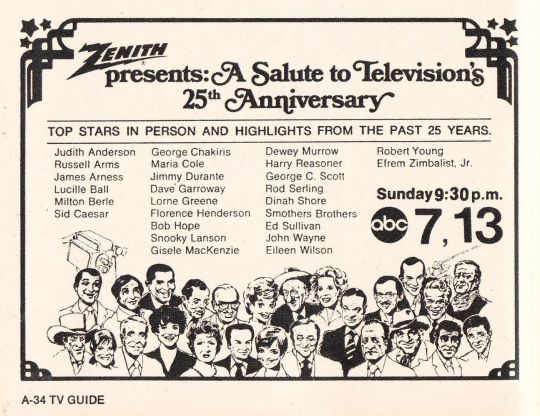
This was a 90-minute special on ABC TV. It was taped August 9 to August 12 in Los Angeles. It featured clips from show’s from television’s past.

Zenith was co-founded in 1918 by Ralph Matthews and Karl Hassel as Chicago Radio Labs. The name "Zenith" came from ZN'th, a contraction of its founders' ham radio call sign, 9ZN. The Zenith Radio Company was formally incorporated in 1923. LG Electronics acquired a controlling share of Zenith in 1995, becoming a wholly owned subsidiary in 1999. Zenith was the inventor of subscription television and the modern remote control, and the first to develop High-definition television (HDTV) in North America.
In his diaries, singer Perry Como mentions jetting to Las Vegas to appear on the show, but he is not in the cast nor is he mentioned as an honoree.
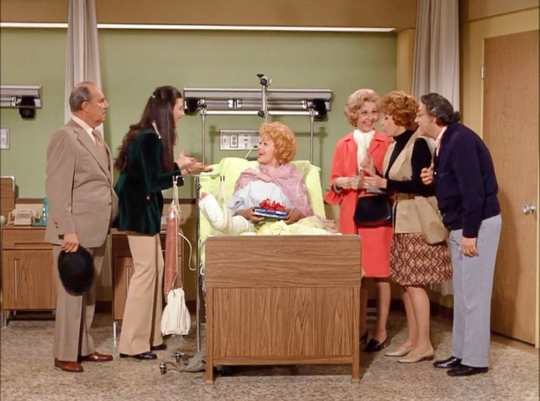
The next night, Monday, September 11, on CBS, “Here’s Lucy” presented its fifth season premiere “Lucy’s Big Break” (HL S5;E1).

“Here’s Lucy’s” lead-in was the 18th season premiere of “Gunsmoke” starring James Arness.
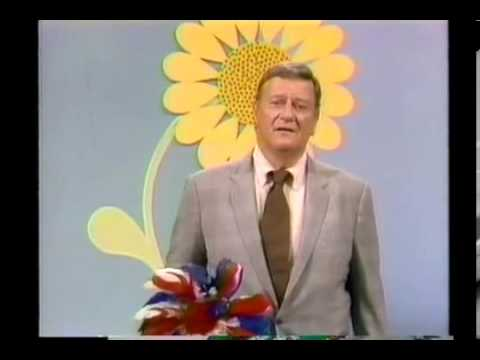
“Gunsmoke’s” competition on NBC was “Rowan and Martin’s Laugh-In” which that night started its sixth season with guest star John Wayne. This is very ironic, considering that this Zenith special features a promo that John Wayne did for “Gunsmoke” when it first premiered in 1955!
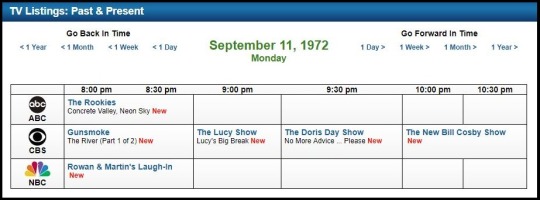
This was a busy night for television, with the series premiere of “The Rookies” (1972-76) on ABC. At 10pm CBS also presented the premiere of “The New Bill Cosby Show,” which lasted just one season.
The show begins with a boy named John Joyce (played by uncredited actors of various ages) who grew up watching television.
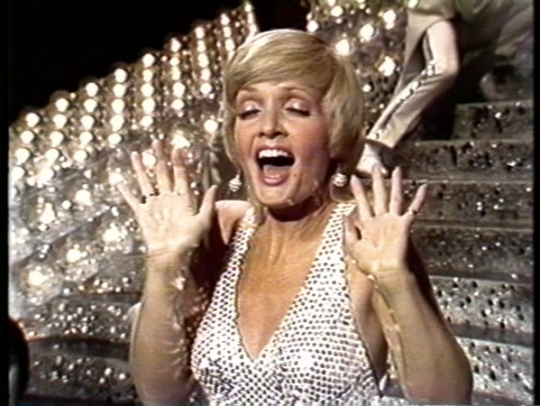
After the opening credits, Florence Henderson performs the seven-minute opening number “How Sweet It Was,” surrounded by dancers. The original song was written by Jack Elliott, Bob Wells and John Bradford. In a section devoted to children's shows, the dancers perform “The Mickey Mouse Club” theme, dressed in mouse ears and sweaters with names on them.

Robert Young (”Marcus Welby”) takes the stage to explain that the Academy of Television Arts and Sciences is also 25 years old and will be honoring a select group of people and programs who have made an impact, had popularity, proved longevity, and demonstrated substance. The recognition award is a silver medallion on a plaque.
A montage of clips from news footage of the Berlin Airlift, the Israeli War, the first Political Convention on TV, and the Kefauver Hearings, and the McCarthy Hearings, follows.
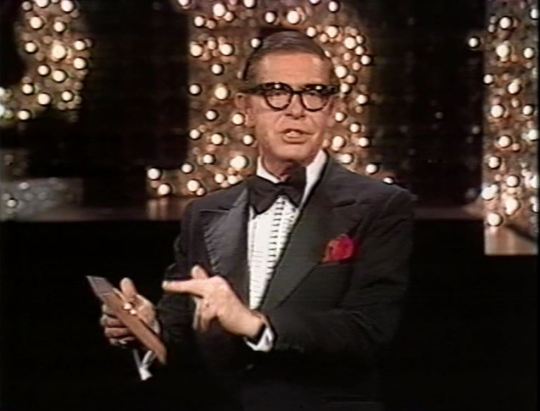
Young pays tribute to television's early comedians with clips of such comics as Jimmy Durante, Martin and Lewis, “The Honeymooners,” and and ending with clips from “Texaco Star Theatre” starring Milton Berle wearing various outrageous costumes.Berle is the first recipient of the medallion. He enters to thank the audience and briefly talk about his type of comedy. Berle claims to have done 641 hours of live television!
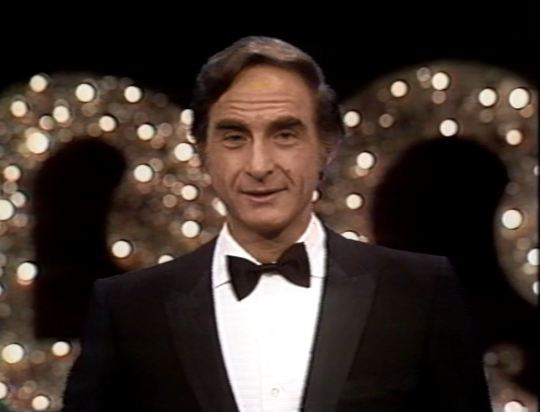
Berle closes by introducing a clip from “Your Show of Shows” starring Sid Caesar and Imogene Coca as figures on a Bavarian clock. Caesar takes the stage to thank the Academy for the medallion. His remarks are humble and brief.

After a commercial for Zenith Super Chromacolor, there is a tribute to TV dramas with a montage of clips from anthology shows like “The Alcoa Hour,” “Dupont Show of the Week,” “Westinghouse Studio One,” “The U.S. Steel Hour,” “Playhouse 90,” “Hallmark Hall of Fame,” “Goodyear Playhouse,” “Producer's Showcase,” and “Net Playhouse.” The clips feature actors like Robert Preston, Andy Griffith, Jackie Gleason, and Paul Newman.

George C. Scott enters to talk about the contributions of “The Hallmark Hall of Fame.” Clips from the show feature actors like Charlton Heston, Peter Ustinov, George C. Scott, and Dame Judith Anderson, who accepts a medallion on behalf of the show.

A salute to TV Westerns begins with a stylized Old West town with a handsome stranger (George Chakiris), riding into town on a white horse. Entering the saloon, he plays cards with a man in black, listens to Lily the dance hall girl, and then gets into a shoot out where (naturally) he is the only one left standing.
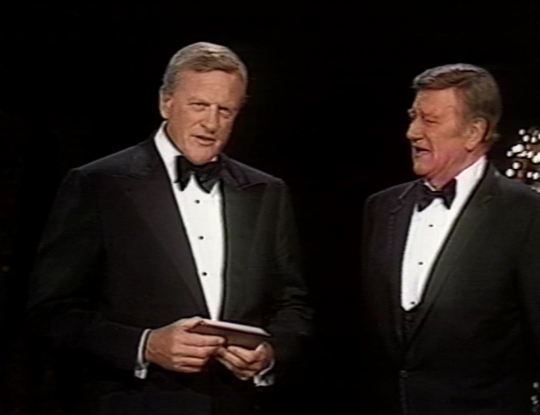
After the sketch, John Wayne introduces clips from westerns like “The Lone Ranger,” “Cheyenne, ” “Bonanza,” and “Gunsmoke.” James Arness, who played Marshall Dillon on “Gunsmoke,” joins Wayne onstage to receive a medallion on behalf of the show.
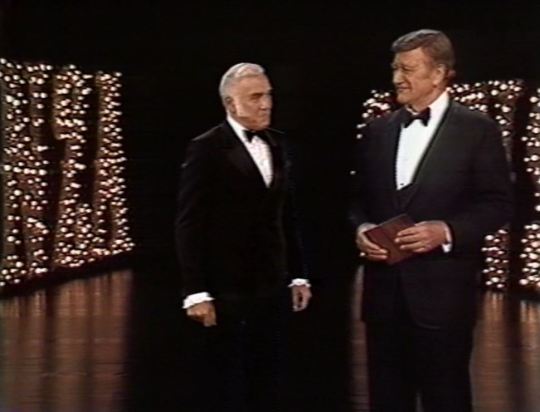
Lorne Greene then accepts a medallion on behalf of “Bonanza.”
A salute to TV crime dramas begins with a stylized city street with a handsome stranger (George Chakiris again), riding into town in a white sports car. The scenario deliberately mirrors the previous one for westerns. Entering the bar, he listens to Sally the burlesque dancer, and gets into a shoot out with a man in black where (naturally) he is the only one left standing.

After the sketch, Efrem Zimalist Jr. (“The F.B.I.”) introduces some ‘fast moving scenes’ from crime shows like “Hawaii Five-O” and (oddly) “Batman.” Zimbalist pays tribute to Jack Webb and the series “Dragnet.” Accepting the medallion on behalf of Webb is Los Angeles Police Commissioner Edward M. Davis.
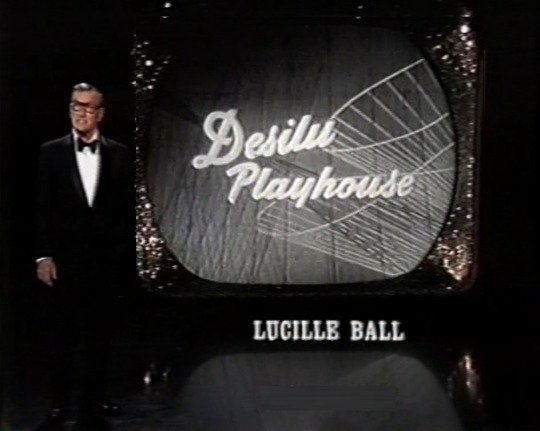
Dave Garroway (“Today”) tells us that there are 121 recipients of the silver anniversary medallion, and that there is no way a 90-minute program can adequately pay tribute them all. Behind him is a scroll of names and clips from the honorees, including Lucille Ball and “The Desilu Playhouse.” Interestingly, for the sake of continuity, all the clips are in black and white, even if a show was aired in color.
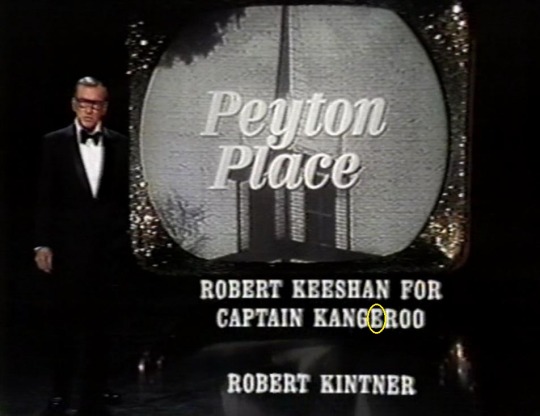
Oops! The list of honorees mis-spells “Captain Kangaroo” as “Captain Kangeroo.”
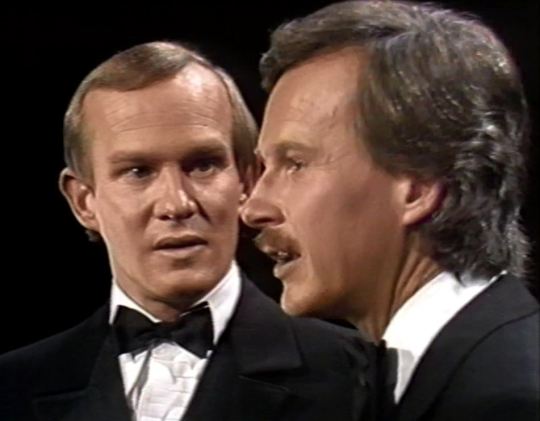
The Smothers Brothers, Tom and Dick, talk about television, although Tom has trouble not mentioning its many flaws, despite Dick's attempt to keep things positive.
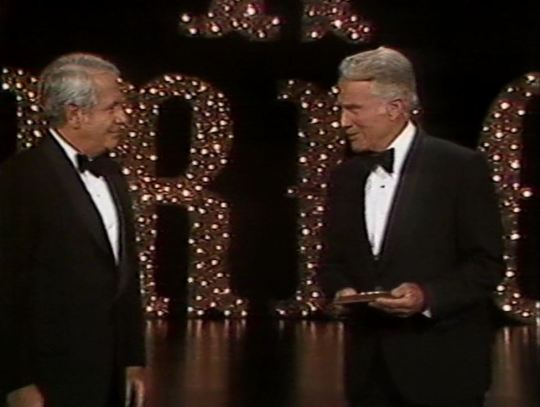
Harry Reasoner talks about television news and tributes Edward R. Murrow. Clips consist of Murrow interviewing such figures as Castro, Marilyn Monroe, and John F. Kennedy. Murrow died in 1965, so his brother Dewey Murrow accepts the medallion on his behalf.
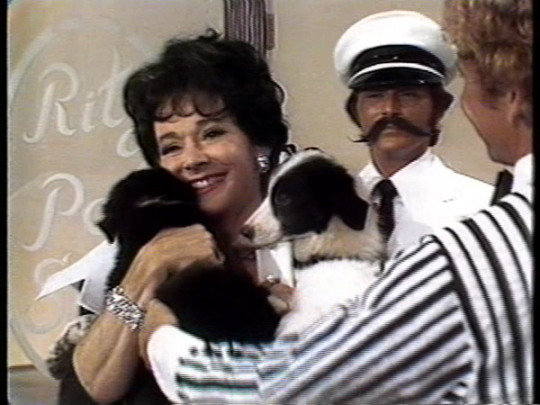
Leading off a tribute to music on television is presented in the style of “Your Hit Parade”:
#5 - “Shrimp Boats” sung by Eileen Wilson. It was written in 1951 by Paul Mason Howard and Paul Weston.
#3 - “(Why Did I Tell You I Was Going To) Shanghai” sung by Russell Arms. It was written in 1951 by Bob Hilliard and Milton De Lugg.
Extra - “Love is Sweeping the Country” performed by the Hit Parade Dancers. It was written by George and Ira Gershwin for the 1931 musical Of Thee I Sing.
#2 - “(How Much is That) Doggie in the Window?” sung by Giselle MacKenzie (above). It was written by Bob Merrill in 1952.
#1 - “This Ole House” sung by Snooky Lanson. It was written by Stuart Hamblen in 1954.
Curiously, there is no #4, perhaps for time limitations or because there are only four alumni of “Your Hit Parade” in the show.
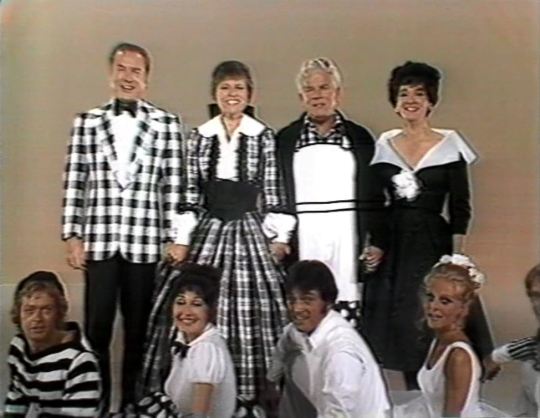
Closing the section, the group sings “So Long for a While,” the closing song of “Your Hit Parade” written by Hy Zaret.

Jimmy Durante enters at the end of the sequence to tribute Music and Variety on television. It begins with a montage that features Steve Allen, Liberace, Durante, Edgar Bergen, and Dinah Shore, who is the next honoree. Dinah talks about her work on “The Chevy Show.”

Dinah Shore: “We were live and our main motivation was fear!”
Shore then tributes the late Nat King Cole, and introduces Maria Cole, his widow. “The Nat King Cole Show” (1956) was the first television show starring a black man.

Durante returns and sings “September Song” by Kurt Weill and Maxwell Anderson for the 1938 musical Knickerbocker Holiday.
After a commercial, Rod Serling (“The Twilight Zone”) presents a medallion to 'Mr. Sunday Night' Ed Sullivan. Clips from “Toast of the Town” (aka “The Ed Sullivan Show”) feature Julie Andrews, the Beatles, Rocky Marciano, and President Eisenhower.
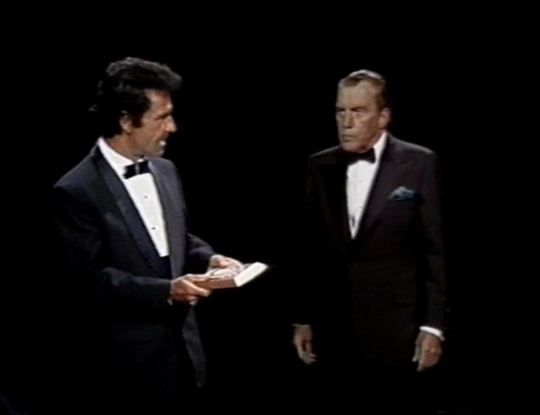
When Ed Sullivan enters to accept his medallion, it is apparent that he is not on the same stage with Serling, but has been inserted into the shot using special effects. When Serling hands him the award, the camera switches to a close-up to avoid the transfer.
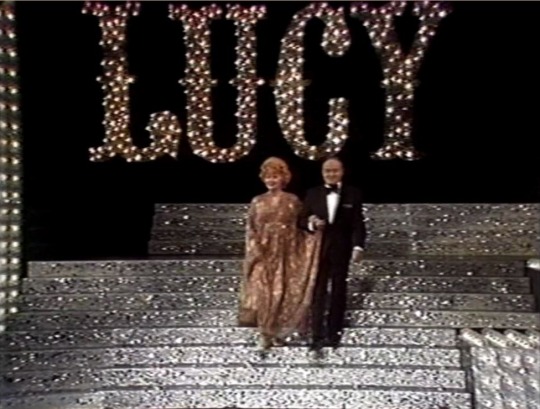
Serling also presents medallions to Lucille Ball and Bob Hope. A brief montage of clips from “I Love Lucy” and various Bob Hope specials follows. It includes scenes from “The Audition” (ILL S1;E6), “The Operetta” (ILL S2;E5), “Lucy Meets Harpo Marx” (ILL S4;E28). Interestingly, there are no clips of the two performing together.
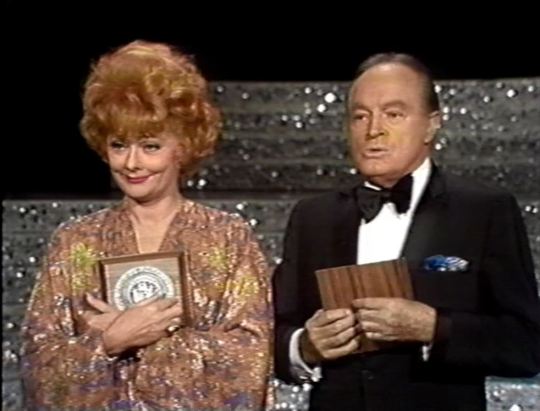
Once again, it is apparent that Serling is not on the same stage as Lucy and Bob, despite the fact that they address him as if he were there standing beside him. This time there is no special effect to imply they are together. Hope calls him the “spooky writer” and Lucy refers to Serling's voice on “headache commercials.” Hope and Ball exchange some friendly banter based on their age:
Lucy: “I just love watching 'The Late, Late Show'. Where else could I be 25 for 25 years?"
Bob: “On your reruns. You know I'm kidding, Lucy. You're the most beautiful woman in Hollywood and you have been for many years.”
Lucy: “That's quite a compliment considering you started as a stuntman for Francis X. Bushman.”
The show closes with the singers and dancers reprising “How Sweet It Was” and Robert Young returning to sum up television's progress and promise for the future. This time the clips behind him are in color. A montage of 'good nights' from various television shows plays under the credits.
This Date in Lucy History ~ September 10

“Lucy and Danny Thomas” (HL S6;E1) ~ September 10, 1974
#Zenith#Lucille Ball#Bob Hope#Here's Lucy#Danny Thomas#A Salute to Television's First 25 Years#Judith Anderson#Hallmark Hall of Fame#Robert Young#Russell Arms#Your Hit Parade#James Arness#Bonanza#Gunsmoke#Milton Berle#Texaco Star Theatre#George Chakiris#Sid Caesar#Your Show of Shows#I Love Lucy#Maria Cole#Nat King Cole#Dinah Shore#The Chevy Show#Edward M. Davis#Jimmy Durante#September Song#Dave Garroway#Lorne Greene#Florence Henderson
6 notes
·
View notes
Photo
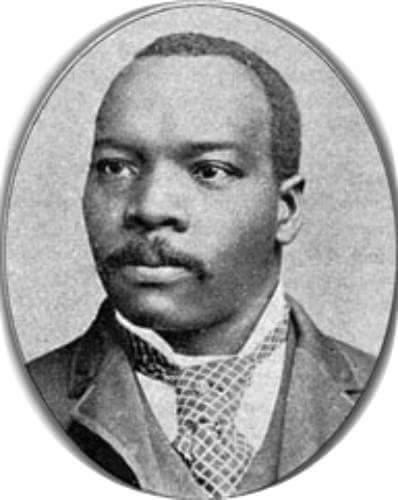
Granville Tailer Woods (April 23, 1856 – January 30, 1910) was an American inventor who held more than 50 patents. He is also the first American of African ancestry to be a mechanical and electrical engineer after the Civil War. Self-taught, he concentrated most of his work on trains and streetcars. One of his notable inventions was the Multiplex Telegraph, a device that sent messages between train stations and moving trains. His work assured a safer and better public transportation system for the cities of the United States. Granville T. Woods was born to Martha J. Brown and Cyrus Woods. He also had a brother named Lyates. His mother was part Native American, and his father was African American. Granville attended school in Columbus until age 10, but had to leave due to his family's poverty, which necessitated in his need to work; he served an apprenticeship in a machine shop and learned the trades of machinist and blacksmith. Some sources of his day asserted that he also received two years of college-level training in "electrical and mechanical engineering," but little is known about where he might have studied. In 1872 , Woods obtained a job as a fireman on the Danville and Southern Railroad in Missouri, eventually becoming an engineer. In December 1874, he moved to Springfield, Illinois, and worked at a rolling mill, the Springfield Iron Works. He studied mechanical and electrical engineering in college from 1876-1878. In 1878, he took a job aboard the "Ironsides", and, within two years, became Chief Engineer of the steamer. When he returned to Ohio, he became an engineer with the Dayton and Southwestern Railroad in southwestern Ohio. In 1880, he moved to Cincinnati, Ohio and established his business as an electrical engineer and an inventor. After receiving the patent for the multiplex telegraph, he reorganized his Cincinnati company as the Woods Electric Co, but in 1892 he moved his own research operations to New York City, where he was joined by a brother, Lyates Woods, who also had several inventions of his own. Some internet sources claim he was married. However, the newspapers of his day generally referred to him as a "bachelor." The one indication that he had been married at some point was a brief mention in 1891 that said he was being sued for divorce by a woman identified as Ada Woods. But while little more was said of his personal life, Granville T. Woods was often described as an articulate and well-spoken man, as well as meticulous and stylish in his choice of clothing, and a man who preferred to dress in black. At times, he would refer to himself as an immigrant from Australia, in the belief that he would be given more respect if people thought he was from a foreign country, as opposed to being an African American. In his day, the black newspapers frequently expressed their pride in his achievements, saying he was "the greatest of Negro inventors", and sometimes even calling him "professor," although there is no evidence he ever received a college degree. Though largely self-taught, he studied electrical and mechanical engineering from 1876 to 1878. After that he worked on a British steamer, then became an engineer on a railroad based in Cincinnati, where he settled around 1880. Woods received his first patent in 1884 for a steam boiler furnace. In 1885 he invented a system called telegraphony, which allowed telegraph lines to carry voice signals. In 1887 he patented the induction telegraph for sending messages to and from moving trains. Other inventions for electric railways included electromechanical and electromagnetic brakes, a wheeled trolley for drawing power for streetcars from an overhead wires and a safety cutout to prevent injury from accidental contact with overhead wires. For a while he manufactured and sold his inventions through the Woods Electric Company, but he later sold his patent rights to the General Electric Company. In 1890 Woods moved to New York City. In collaboration with his brother Lyates he patented emergency braking systems and devices relating to third-rail power. During his prolific career, Woods received 35 patents for inventions that contributed to the development of the transportation and communication industries. As a Black inventor, however, he had difficulty in marketing his inventions and sold them instead to well-financed corporations, such as General Electric and American Bell Telephone. Woods spent the last years of his life in virtual poverty as he battled in court for control of his inventions. Woods invented and patented Tunnel Construction for the electric railroad system, and was referred to by some as the "Black Edison." In 1885, Woods patented an apparatus which was a combination of a telephone and a telegraph. The device, which he called "telegraphony", would allow a telegraph station to send voice and telegraph messages over a single wire. He sold the rights to this device to the American Bell Telephone Company. In 1887, he patented the Synchronous Multiplex Railway Telegraph which allowed communications between train stations from moving trains, a technology pioneered by Lucius Phelps in 1884. Thomas Edison later filed a claim to the ownership of this patent. In 1888, Woods manufactured a system of overhead electric conducting lines for railroads modeled after the system pioneered by Charles van Depoele, a famed inventor who had by then installed his electric railway system in thirteen U.S. cities. In 1889, he filed a patent for an improvement to the steam-boiler furnace. Granville Woods often had difficulties in enjoying his success as other inventors made claims to his devices. Thomas Edison made one of these claims, stating that he had first created a similar telegraph and that he was entitled to the patent for the device. Woods was twice successful in defending himself, proving that there were no other devices upon which he could have depended or relied upon to make his device. After Thomas Edison's second defeat, he decided to offer Granville Woods a position with the Edison Company, but Granville declined. Woods is sometimes credited with the invention of the electric third rail, however, many third rail systems were in place in both Europe and North America at the time Woods filed for his patent in 1901. Thomas Edison had been awarded a patent for the third rail almost two decades earlier, in 1882. Woods is also sometimes credited with the invention of the air brake in 1904 for trains, however, George Westinghouse patented the air brake almost 40 years prior. Over the course of his lifetime Granville Woods would obtain more than 50 patents for inventions including an automatic brake and an egg incubator and for improvements to other inventions such as safety circuits, telegraph, telephone, and phonograph. He died on January 30, 1910 in New York City, having sold a number of his devices to such companies as Westinghouse, General Electric and American Engineering. Until 1975, his resting place was an unmarked grave, but historian M.A. Harris helped to raise funds, and persuaded several of the corporations that used Woods's inventions to donate towards a headstone. It was erected at St. Michael's Cemetery in Elmhurst, Queens NY. Baltimore City Community College established the Granville T Woods scholarship in memory of the inventor.
16 notes
·
View notes
Text
Events 3.5
363 – Roman emperor Julian leaves Antioch with an army of 90,000 to attack the Sasanian Empire, in a campaign which would bring about his own death.
1046 – Nasir Khusraw begins the seven-year Middle Eastern journey which he will later describe in his book Safarnama.
1279 – The Livonian Order is defeated in the Battle of Aizkraukle by the Grand Duchy of Lithuania.
1496 – King Henry VII of England issues letters patent to John Cabot and his sons, authorising them to explore unknown lands.
1616 – Nicolaus Copernicus's book On the Revolutions of the Heavenly Spheres is added to the Index of Forbidden Books 73 years after it was first published.
1766 – Antonio de Ulloa, the first Spanish governor of Louisiana, arrives in New Orleans.
1770 – Boston Massacre: Five Americans, including Crispus Attucks, are fatally shot by British troops in an event that would contribute to the outbreak of the American Revolutionary War (also known as the American War of Independence) five years later.
1811 – Peninsular War: A French force under the command of Marshal Victor is routed while trying to prevent an Anglo-Spanish-Portuguese army from lifting the Siege of Cádiz in the Battle of Barrosa.
1824 – First Anglo-Burmese War: The British officially declare war on Burma.
1825 – Roberto Cofresí, one of the last successful Caribbean pirates, is defeated in combat and captured by authorities.
1836 – Samuel Colt patents the first production-model revolver, the .34-caliber.
1850 – The Britannia Bridge across the Menai Strait between the island of Anglesey and the mainland of Wales is opened.
1860 – Parma, Tuscany, Modena and Romagna vote in referendums to join the Kingdom of Sardinia.
1868 – Mefistofele, an opera by Arrigo Boito, receives its premiere performance at La Scala.
1872 – George Westinghouse patents the air brake.
1906 – Moro Rebellion: United States Army troops bring overwhelming force against the native Moros in the First Battle of Bud Dajo, leaving only six survivors.
1912 – Italo-Turkish War: Italian forces are the first to use airships for military purposes, employing them for reconnaissance behind Turkish lines.
1931 – The British Raj: Gandhi–Irwin Pact is signed.
1933 – Adolf Hitler's Nazi Party receives 43.9% at the Reichstag elections, which allows the Nazis to later pass the Enabling Act and establish a dictatorship.
1936 – First flight of K5054, the first prototype Supermarine Spitfire advanced monoplane fighter aircraft in the United Kingdom.
1939 – Spanish Civil War: The National Defence Council seizes control of the republican government in a coup d'etat, with the intention of negotiating an end to the war.
1940 – Six high-ranking members of the Soviet politburo, including Joseph Stalin, sign an order for the execution of 25,700 Polish intelligentsia, including 14,700 Polish POWs, in what will become known as the Katyn massacre.
1942 – World War II: Japanese forces capture Batavia, capital of Dutch East Indies, which is left undefended after the withdrawal of the KNIL garrison and Australian Blackforce battalion to Buitenzorg and Bandung.
1943 – First Flight of the Gloster Meteor, Britain's first combat jet aircraft.
1944 – World War II: The Red Army begins the Uman–Botoșani Offensive in the western Ukrainian SSR.
1946 – Cold War: Winston Churchill coins the phrase "Iron Curtain" in his speech at Westminster College, Missouri.
1953 – Joseph Stalin, the longest serving leader of the Soviet Union, dies at his Volynskoe dacha in Moscow after suffering a cerebral hemorrhage four days earlier.
1960 – Indonesian President Sukarno dismissed the Dewan Perwakilan Rakyat (DPR), 1955 democratically elected parliament, and replaced with DPR-GR, the parliament of his own selected members.
1963 – American country music stars Patsy Cline, Hawkshaw Hawkins, Cowboy Copas and their pilot Randy Hughes are killed in a plane crash in Camden, Tennessee.
1965 – March Intifada: A Leftist uprising erupts in Bahrain against British colonial presence.
1966 – BOAC Flight 911, a Boeing 707 aircraft, breaks apart in mid-air due to clear-air turbulence and crashes into Mount Fuji, Japan, killing all 124 people on board.
1970 – The Treaty on the Non-Proliferation of Nuclear Weapons goes into effect after ratification by 43 nations.
1974 – Yom Kippur War: Israeli forces withdraw from the west bank of the Suez Canal.
1978 – The Landsat 3 is launched from Vandenberg Air Force Base in California.
1979 – Soviet probes Venera 11, Venera 12 and the German-American solar satellite Helios II all are hit by "off the scale" gamma rays leading to the discovery of soft gamma repeaters.
1981 – The ZX81, a pioneering British home computer, is launched by Sinclair Research and would go on to sell over 11⁄2 million units around the world.
1982 – Soviet probe Venera 14 lands on Venus.
1991 – Aeropostal Alas de Venezuela Flight 108 crashes in Venezuela, killing 45.
1993 – Palair Macedonian Airlines Flight 301 crashes at Skopje International Airport in Petrovec, North Macedonia, killing 83.
2003 – In Haifa, 17 Israeli civilians are killed in the Haifa bus 37 suicide bombing.
2012 – Tropical Storm Irina kills over 75 as it passes through Madagascar.
2018 – Syrian civil war: The Syrian Democratic Forces (SDF) pause the Deir ez-Zor campaign due to the Turkish-led invasion of Afrin.
2021 – Pope Francis begins a historical visit to Iraq amidst the COVID-19 pandemic.
2021 – Twenty people are killed and 30 injured in a suicide car bombing in Mogadishu, Somalia.
0 notes
Text
Makers of History: Thomas Edison
Hahahahahahahahahah so hands up who thought I was dead.

Well, guess again, boys. I am back after exams put me out to pasture and I am finally getting round to writing about Thomas Edison, America’s greatest inventor and creator of, amongst other things, the light bulb. Mostly I’m back because I feel bad to let @sunflowerannawrites down like this.
Since I decided to do Edison, BuzzFeed Unsolved actually did a fun little piece on him and how he was (possibly) a bit of a copy cat, but I’m not going to focus on that particularly now it’s been done. Instead, here are my top five facts about the inventor of the phonograph, things that I didn’t know about him, or that I think are just cool to know.
(I have to be honest here, Thomas was not the most... scandalous? person I’ve ever researched for this blog, so I’m sorry if this is a little boring or thin on the ground. As I said, these posts are only intended as an introduction to historical figures - a doorway for you to do your own research, if you will. I’m also warming back into doing this)
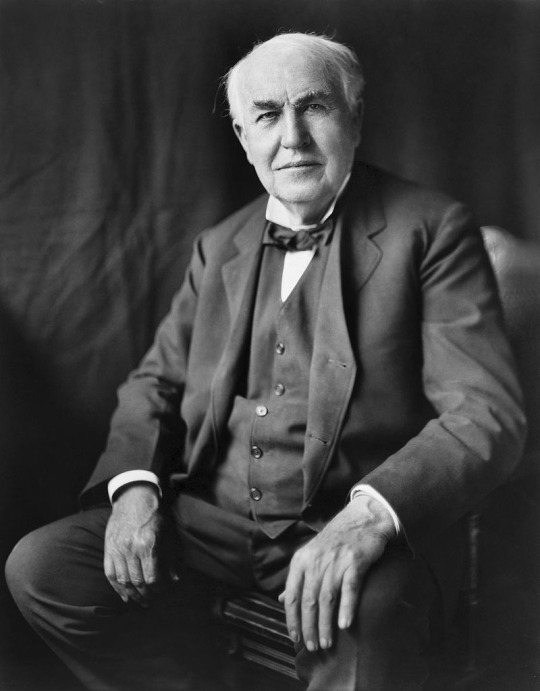
[source]
1) He suffered from hearing loss.
That’s right - our boy Edison suffered from hearing loss, probably thanks to suffering from scarlet fever as a child and ear infections left untreated. Funnily enough though, Edison liked to say that it was from being cuffed around the ear by a train conductor after his lab set caught fire on the train in question. Later he changed his tune, saying that instead the conductor had been lifting him onto the train by his ears, causing him to go deaf.
Fun stories, but my money’s on the scarlet fever.
2) He founded 14 companies in his lifetime and patented over 1000 inventions.
Can you imagine inventing over 1000 things? I can’t even think of 1000 things. Insanity. 1,093 patents in the US to be precise, and the same number in France, the UK, and Germany amongst others. Some of his inventions included the light bulb, the Kinetograph (a motion picture camera) and the Printing Telegraph.
3) The War of Currents.
The War of Currents has perhaps been popularised lately by the movie The Current War, starring Benedict Cumberbatch as Edison and Nicholas Hoult as Nikola Tesla, due for release later this year. Basically, the premise was that Edison founded an electric company working on the premise of Direct Current distribution, whereas his rival George Westinghouse’s electrical company was based upon Alternating Current.
For those of you who don’t know, Direct Current is when current moves in one direction and Alternating Current is when it alternates in direction. If you take an LED light, for example, and run your hands past it, you should be able to tell that the bulb is flashing on and off, because it runs off alternating current. I’m sorry if this is not a brilliant explanation, but I am not a scientist, and I don’t just want to write out word for word a definition that you could find very easily if you googled it. That, my dears, is plagiarism.
Anyway, Thomas Edison thought that alternating current was dangerous because of the high voltage levels it used. Direct current was thus safer, he argued, but the problem was that direct current only worked over short distances. Therefore, alternating current under Westinghouse won out eventually, because it could travel further distance, and fewer electrical plants had to be built. Today we still use alternating current to power our homes, although direct current is used to power small electronic devices, such as computers and phones.
So yes, Edison lost to this lovely fellow below.
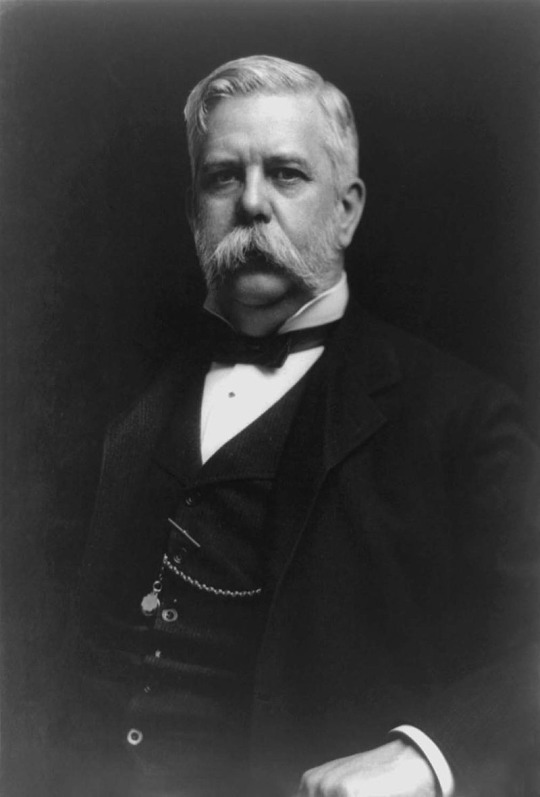
[George Westinghouse; source]
4) He was buddies with Henry Ford.
That’s right - the famous Henry “as long as it’s black” Ford and our boy Edison were friends thanks to Edison being impressed by Ford’s internal combustion engine for his cars. Ford actually once worked as an engineer in the Edison Illuminating Company. They used to go on camping road trips every year from 1914 to 1924, and were friends until Edison’s death. What a bromance.
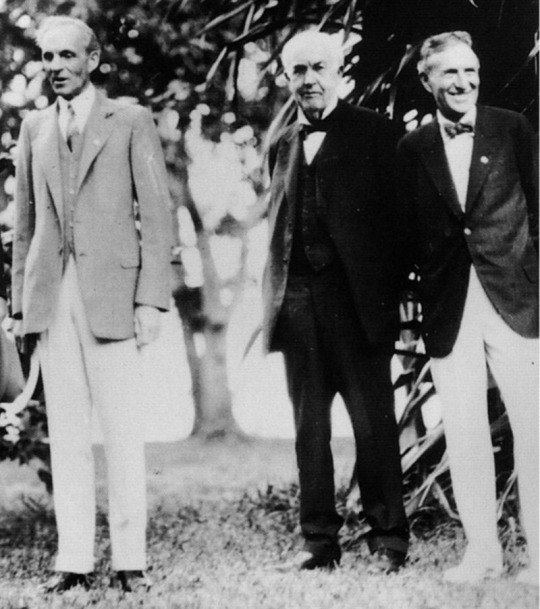
[Henry Ford, Thomas Edison and Harvey Fireston; source]
5) His views on morality and God.
And last but not least, Edison was often labelled an atheist, but in fact he was a scientific deist. Edison did not not believe in a higher being - he just believed that that higher being in question was nature itself, not a god of religion. Edison was also a vegetarian, thanks to his firm aversion to violence and his belief in the importance of life. When drafted as a naval consultant in World War I, Edison insisted that he would only work on defensive weapons, so that he would not contribute to violence in any way.
Well, that’s it for now from Makers of History! This may be the last installment, not because I want to stop, but because this new-fangled Article 13 being proposed by the EU means I may have to delete my blog if it passes. So if I do have to, know that it’s been great fun making these, and I’m sorry to go <3
As always, my sources are WIKIPEDIA.
I’m not doing anything special, just trying to get people interested in history!
Until we meet again,
Aurelia x
#history#make history great again#makers of history#thomas edison#inventors#inventions#henry ford#historians#historical
4 notes
·
View notes
Text
Nikola Tesla - The greatest inventor in history
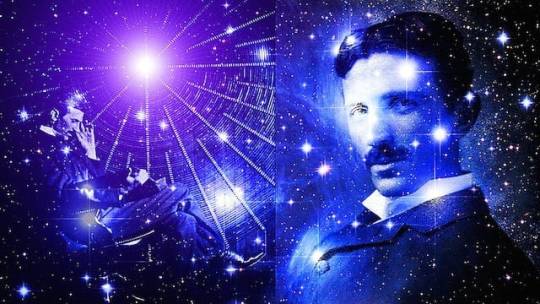
Inventor Nikola Tesla contributed to the development of the alternating-current electrical system that's widely used today and discovered the rotating magnetic field (the basis of most AC machinery).
a
Inventor Nikola Tesla was born in July of 1856, in what is now Croatia. He came to the United States in 1884 and briefly worked with Thomas Edison before the two parted ways.
He sold several patent rights, including those to his alternating-current machinery, to George Westinghouse.
His 1891 invention, the "Tesla coil," is still used in radio technology today. Tesla died in New York City on January 7, 1943.
a
Early Life
Nikola Tesla was born on July 10, 1856, in what is now Smiljan, Croatia. He was one of five children which included siblings Dane, Angelina, Milka and Marica, in the family.
Tesla's interest in electrical invention was spurred by his mother, Djuka Mandic, who invented small household appliances in her spare time while her son was growing up.
Tesla's father, Milutin Tesla, was a Serbian orthodox priest and a writer, and he pushed for his son to join the priesthood. But Nikola's interests lay squarely in the sciences.
After studying at the Realschule, Karlstadt (later renamed the Johann-Rudolph-Glauber Realschule Karlstadt); the Polytechnic Institute in Graz, Austria; and the University of Prague during the 1870s, Tesla moved to Budapest, where for a time he worked at the Central Telephone Exchange.
It was while in Budapest that the idea for the induction motor first came to Tesla, but after several years of trying to gain interest in his invention, at age 28 Tesla decided to leave Europe for America.
Famed Inventor
In 1884 Tesla arrived the United States with little more than the clothes on his back and a letter of introduction to famed inventor and business mogul Thomas Edison, whose DC-based electrical works were fast becoming the standard in the country.
Edison hired Tesla, and the two men were soon working tirelessly alongside each other, making improvements to Edison's inventions.
However, several months later, the two parted ways due to a conflicting business-scientific relationship, attributed by historians to their incredibly different personalities.
While Edison was a power figure who focused on marketing and financial success, Tesla was commercially out-of-tune and somewhat vulnerable.
After parting ways with Edison, in 1885 Tesla received funding for the Tesla Electric Light Company and was tasked by his investors to develop improved arc lighting.
After successfully doing so, however, Tesla was forced out of the venture and for a time had to work as a manual laborer in order to survive.
His luck changed in 1887, when he was able to find interest in his AC electrical system and funding for his new Tesla Electric Company. Setting straight to work, by the end of the year, Tesla had successfully filed several patents for AC-based inventions.
Tesla's AC system eventually caught the attention of American engineer and business man George Westinghouse, who was seeking a solution to supplying the nation with long-distance power.
Convinced that Tesla's inventions would help him achieve this, in 1888 he purchased his patents for $60,000 in cash and stock in the Westinghouse Corporation.
As interest in an alternating-current system grew, Tesla and Westinghouse were put in direct competition with Thomas Edison, who was intent on selling his direct-current system to the nation.
A negative-press campaign was soon waged by Edison, in an attempt to undermine interest in AC power.
Tesla, for his part, continued in his work and would patent several more inventions during this period, including the "Tesla coil," which laid the foundation for wireless technologies and is still used in radio technology today.
Unfortunately for Thomas Edison, the Westinghouse Corporation was chosen to supply the lighting at the 1893 World's Columbian Exposition in Chicago, and Tesla conducted demonstrations of his AC system there.
Two years later, in 1895, Tesla designed what was among the first AC hydroelectric power plants in the United States, at Niagara Falls.
The following year, it was used to power the city of Buffalo, New York, a feat that was highly publicized throughout the world. With its repeat successes and favorable press, the alternating-current system would quickly become the preeminent power system of the 20th century, and it has remained the worldwide standard ever since.
In addition to his AC system and coil, throughout his career, Tesla discovered, designed and developed ideas for a number of other important inventions—most of which were officially patented by other inventors—including dynamos (electrical generators similar to batteries) and the induction motor.
He was also a pioneer in the discovery of radar technology, X-ray technology, remote control and the rotating magnetic field—the basis of most AC machinery.
The Fall from Grace
Having become obsessed with the wireless transmission of energy, around 1900 Nikola set to work on his boldest project yet: to build a global, wireless communication system—to be transmitted through a large electrical tower—for sharing information and providing free electricity throughout the world.
With funding from a group of investors that included financial giant J. P. Morgan, in 1901 Tesla began work on the project in earnest, designing and building a lab with a power plant and a massive transmission tower on a site on Long Island, New York, that became known as Wardenclyffe.
However, when doubts arose among his investors about the plausibility of Tesla's system and his rival, Guglielmo Marconi—with the financial support of Andrew Carnegie and Thomas Edison—continued to make great advances with his own radio technologies, Tesla had no choice but to abandon the project.
The Wardenclyffe staff was laid off in 1906 and by 1915 the site had fallen into foreclosure.
Two years later Tesla declared bankruptcy and the tower was dismantled and sold for scrap to help pay the debts he had accrued.
Death and Legacy
After suffering a nervous breakdown, Tesla eventually returned to work, primarily as a consultant. But as time went on, his ideas became progressively more outlandish and impractical.
He also grew increasingly eccentric, devoting much of his time to the care of wild pigeons in New York City's parks. He even drew the attention of the FBI with his talk of building a powerful "death beam," which had received some interest from the Soviet Union during World World II.
Poor and reclusive, Nikola Tesla died on January 7, 1943, at the age of 86, in New York City, where he had lived for nearly 60 years.
But the legacy of the work he left behind him lives on to this day.Several books and films have highlighted Tesla's life and famous works, including Nikola Tesla, The Genius Who Lit the World, a documentary produced by the Tesla Memorial Society and the Nikola Tesla Museum in Belgrade, Serbia; and The Secret of Nikola Tesla, which stars Orson Wellesas J. P. Morgan).
And in the 2006 Christopher Nolan film The Prestige, Tesla was portrayed by rock star/actor David Bowie. In 1994, a street sign identifying "Nikola Tesla Corner" was installed near the site of his former New York City laboratory, at the intersection of 40th Street and 6th Avenue.
Wardenclyffe Project
Since Tesla's original forfeiture of his Wardenclyffe site, ownership of the property has passed through numerous hands, and several attempts have been made to preserve it, but in 1967, 1976 and 1994 efforts to have it declared a national historic site failed.
Then, in 2008, a group called the Tesla Science Center was formed with the intention of purchasing the property and turning it into a museum dedicated to the inventor's work.
In February 2009 the Wardenclyffe site went on the market for nearly $1.6 million, and for the next several years, the Tesla Science Center worked diligently to raise funds for its purchase.
In 2012, public interest in the project peaked when Matthew Inman of TheOatmeal.com collaborated with the TSC in an Internet fundraising effort, ultimately receiving enough contributions to acquire the site in May 2013.
Work on its restoration is still in progress. – Albert Jack
Albert Jack AUDIOBOOKS available for download here
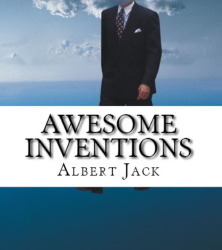
Buy Now
Audio Books
Other Platforms
Assorted eBooks
More Awesome Inventions with Albert Jack
Read the full article
0 notes